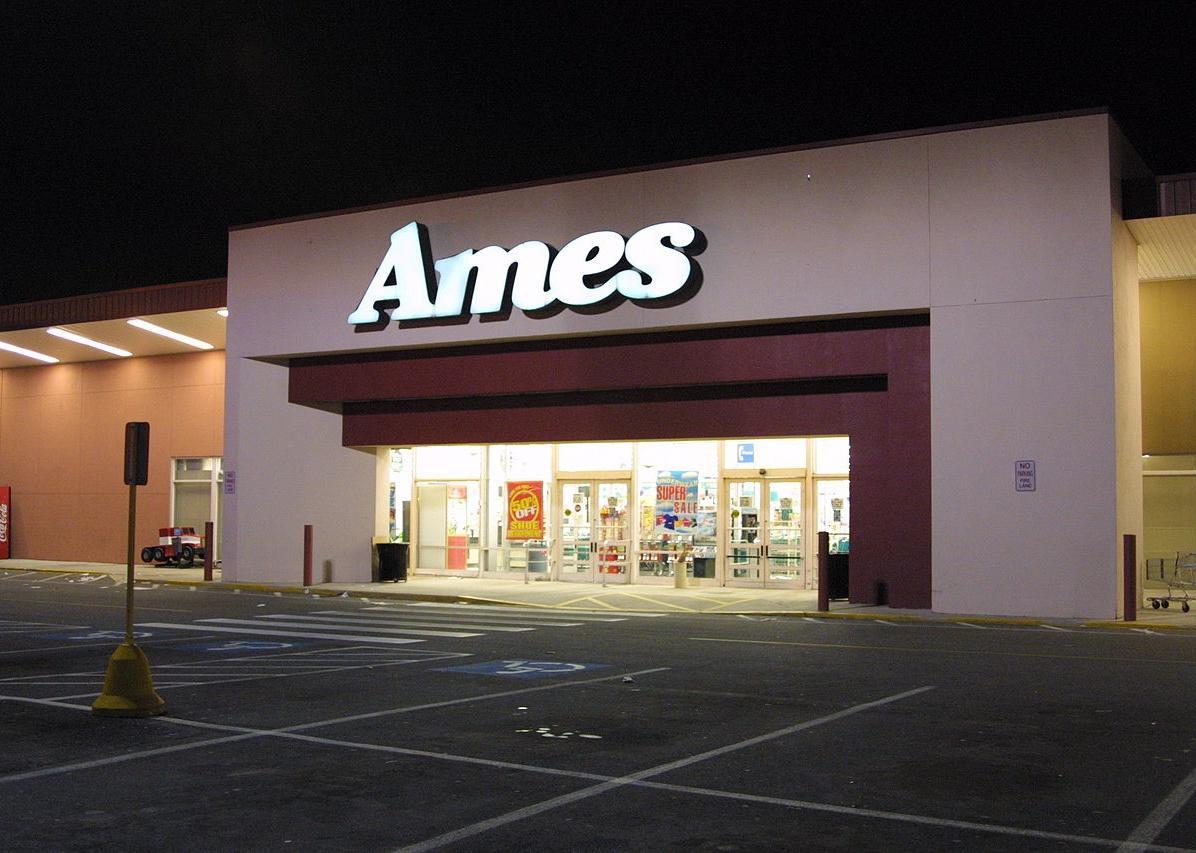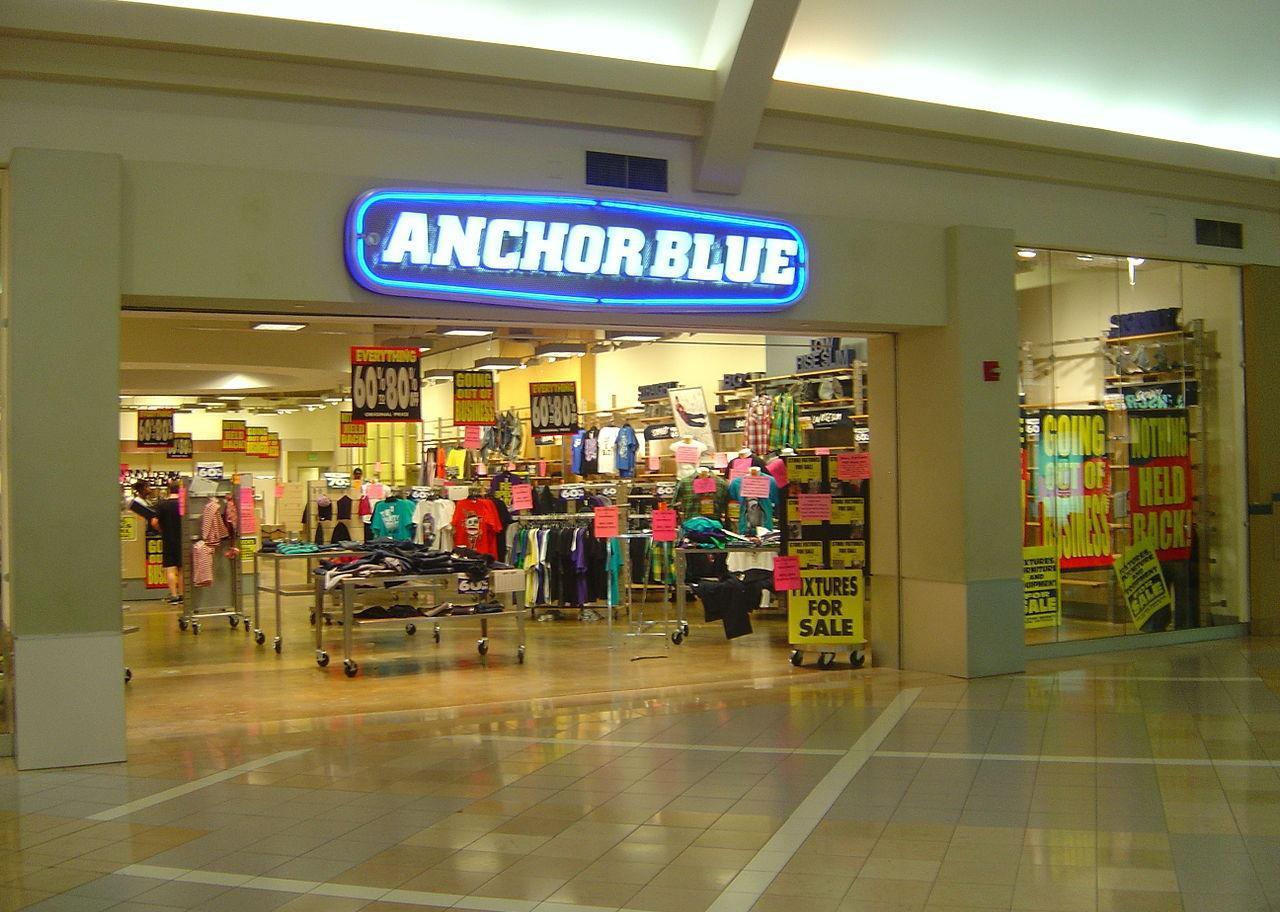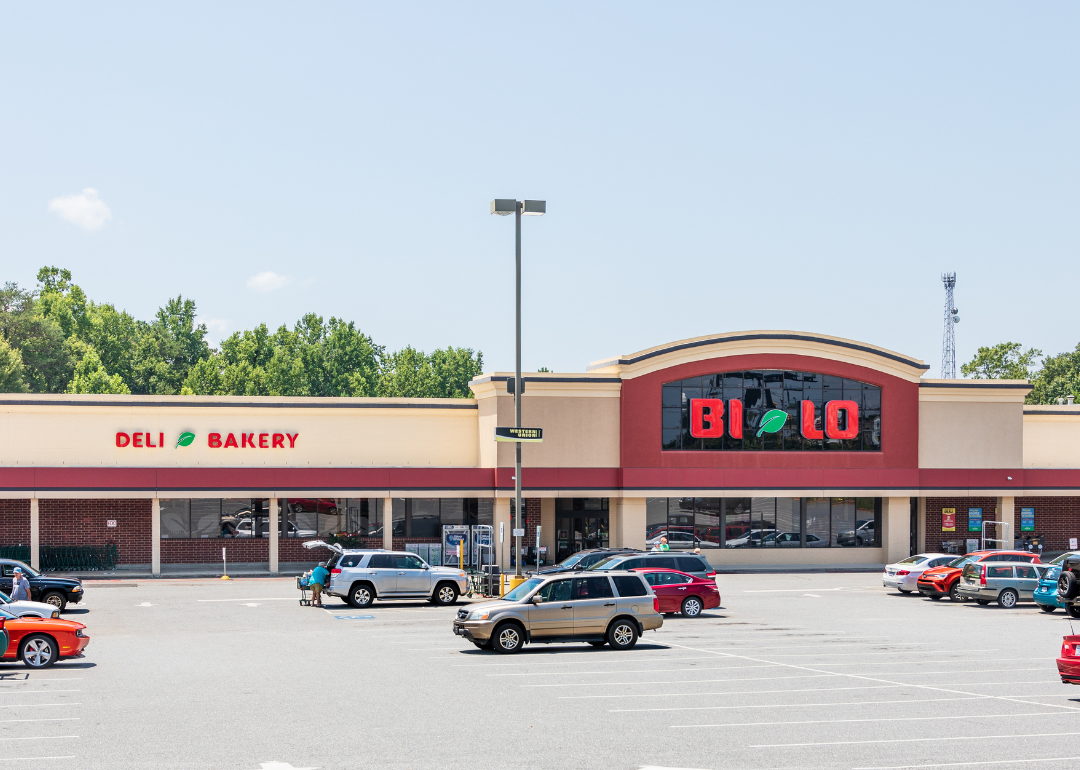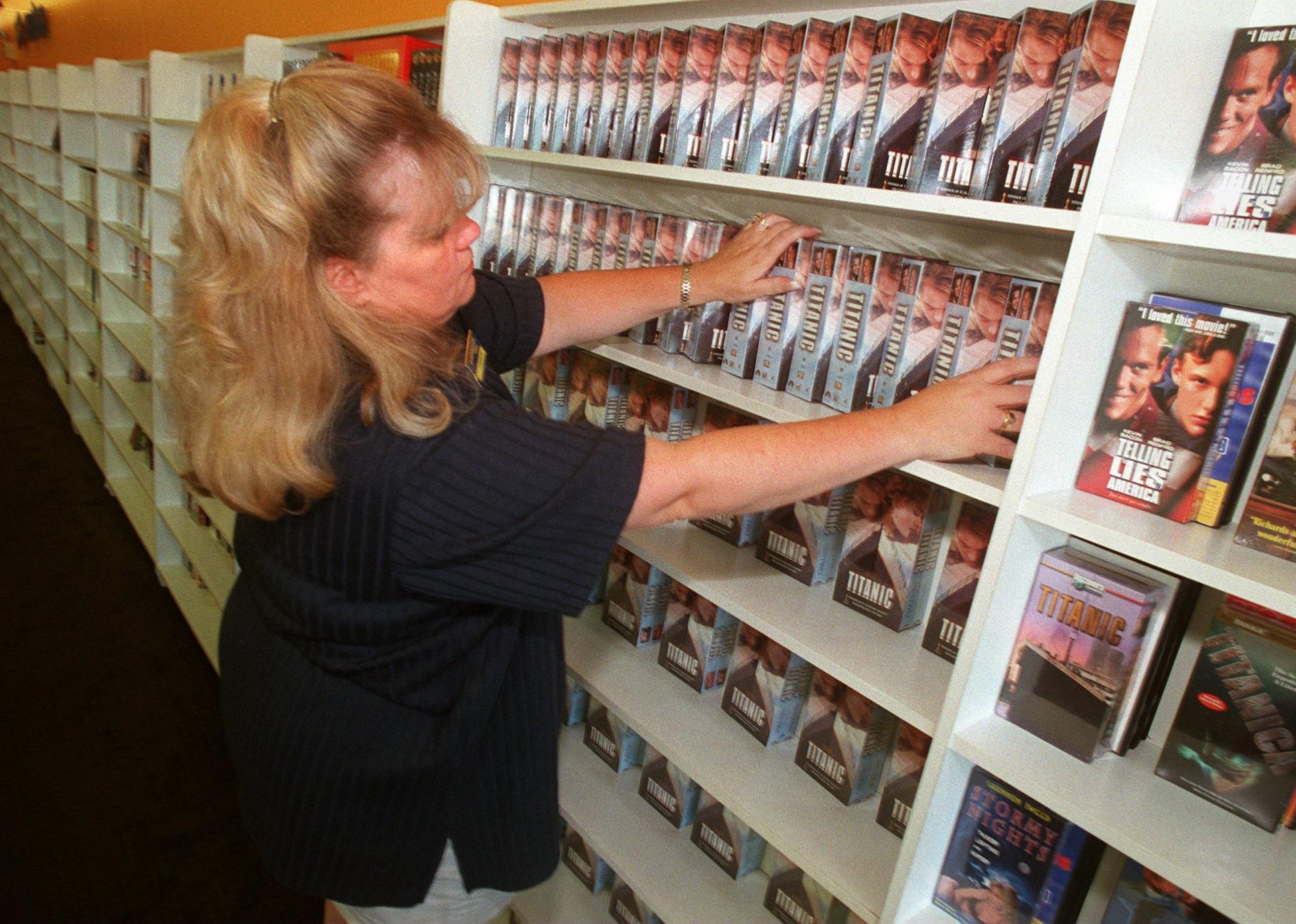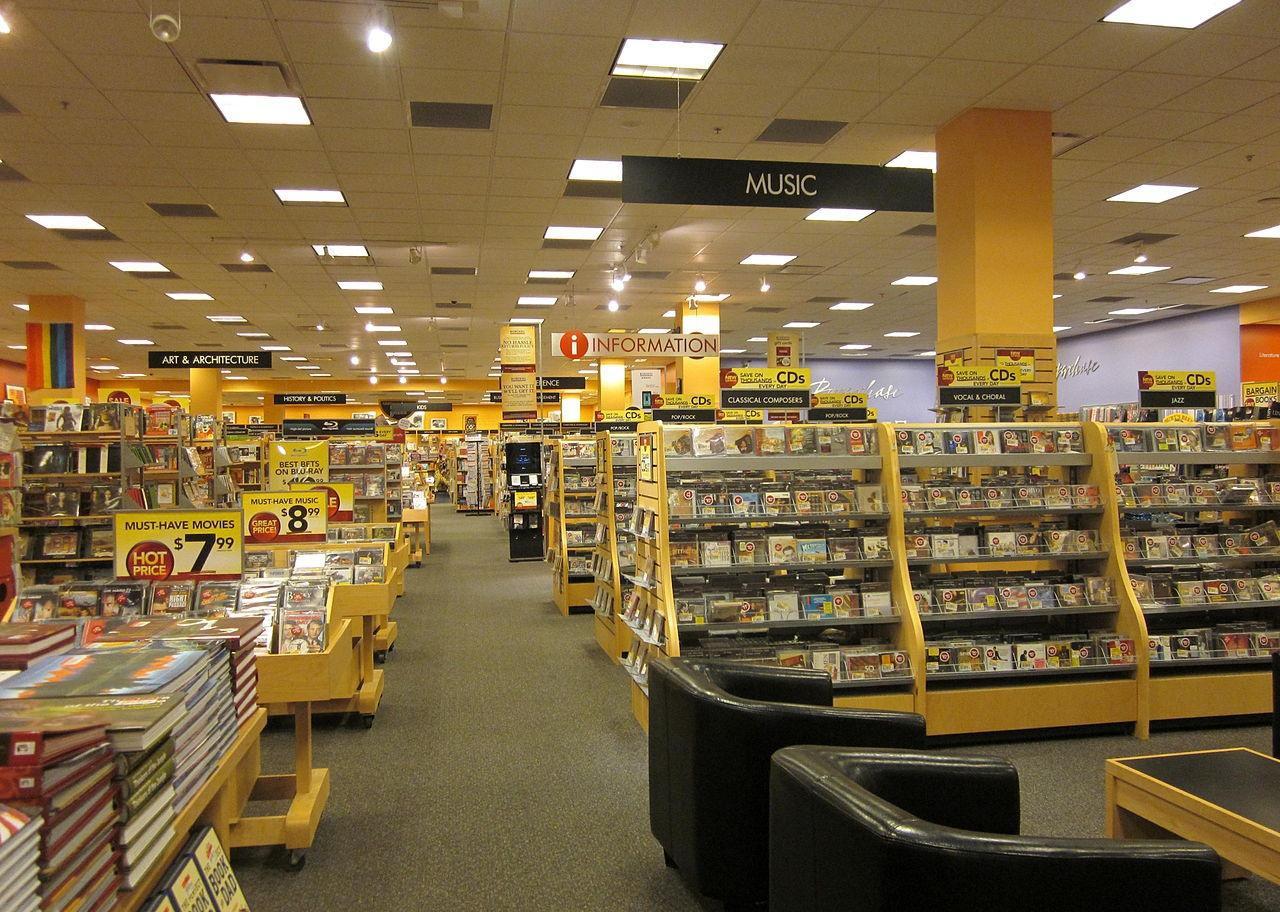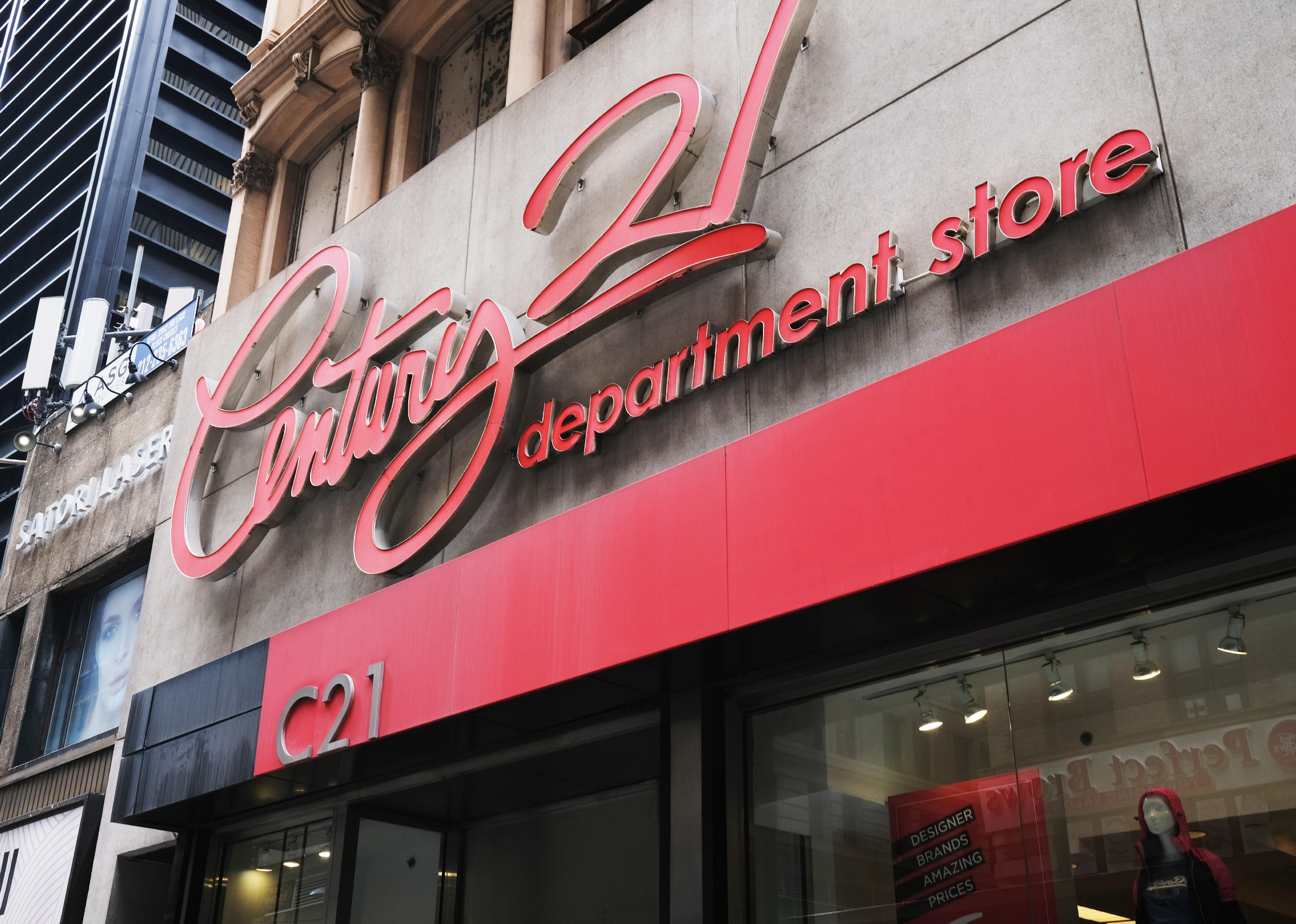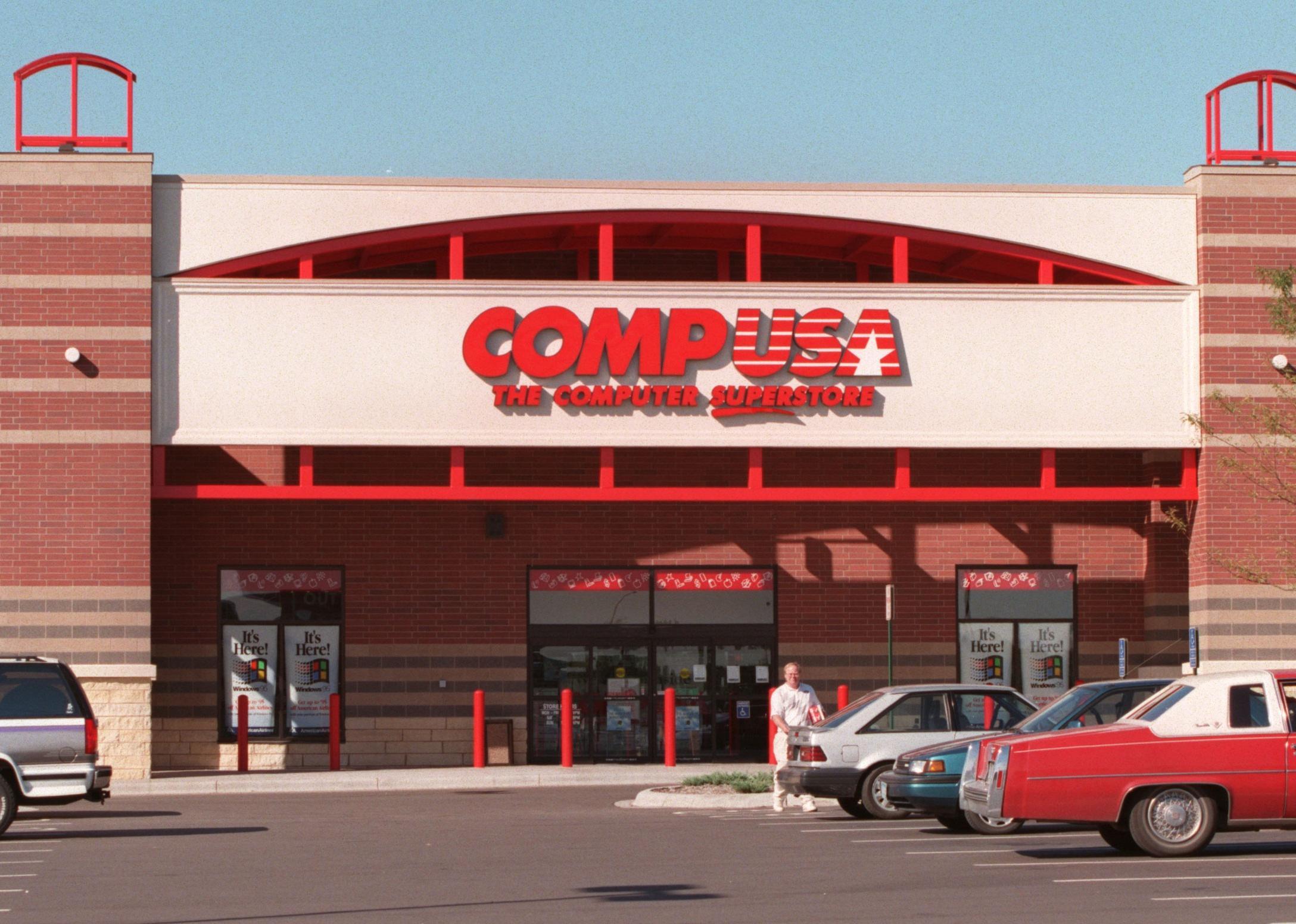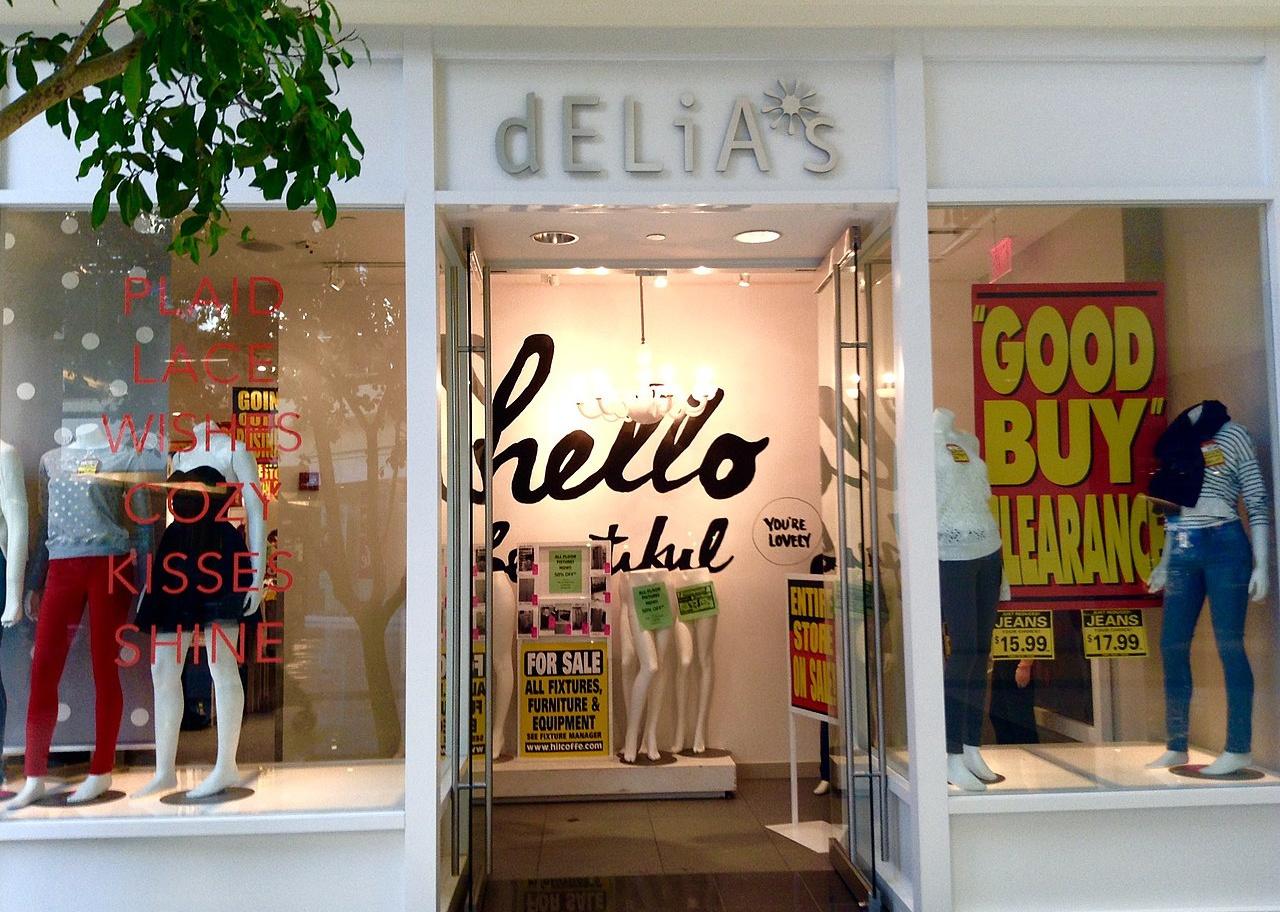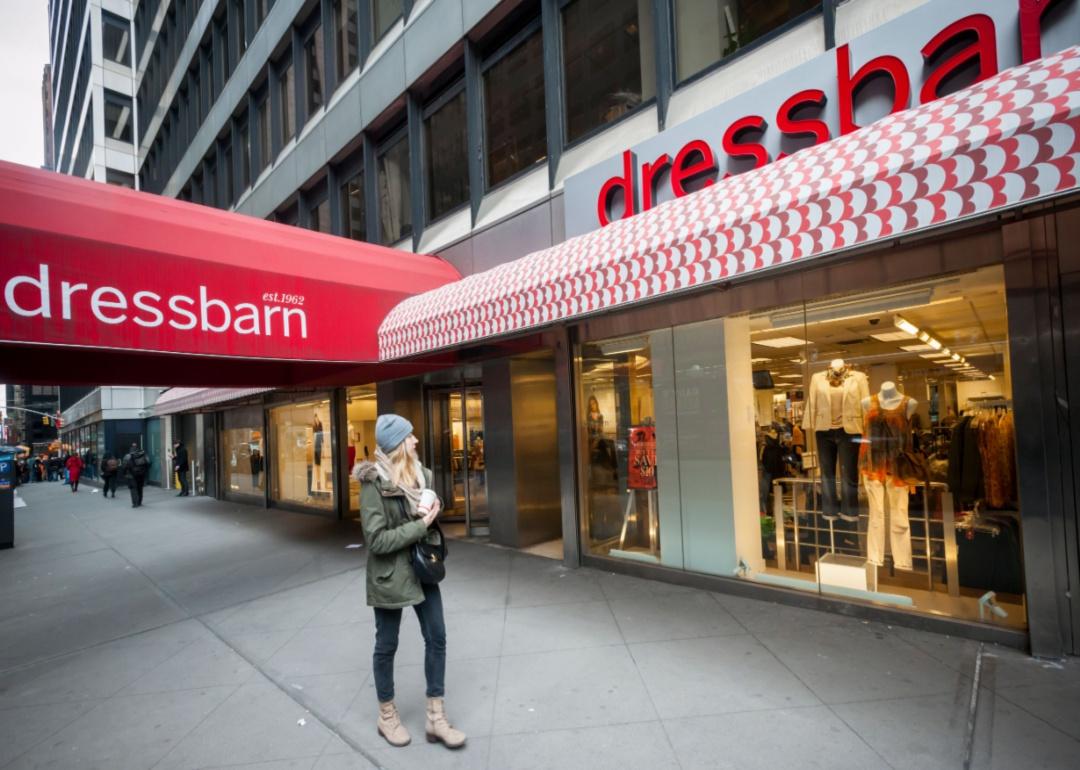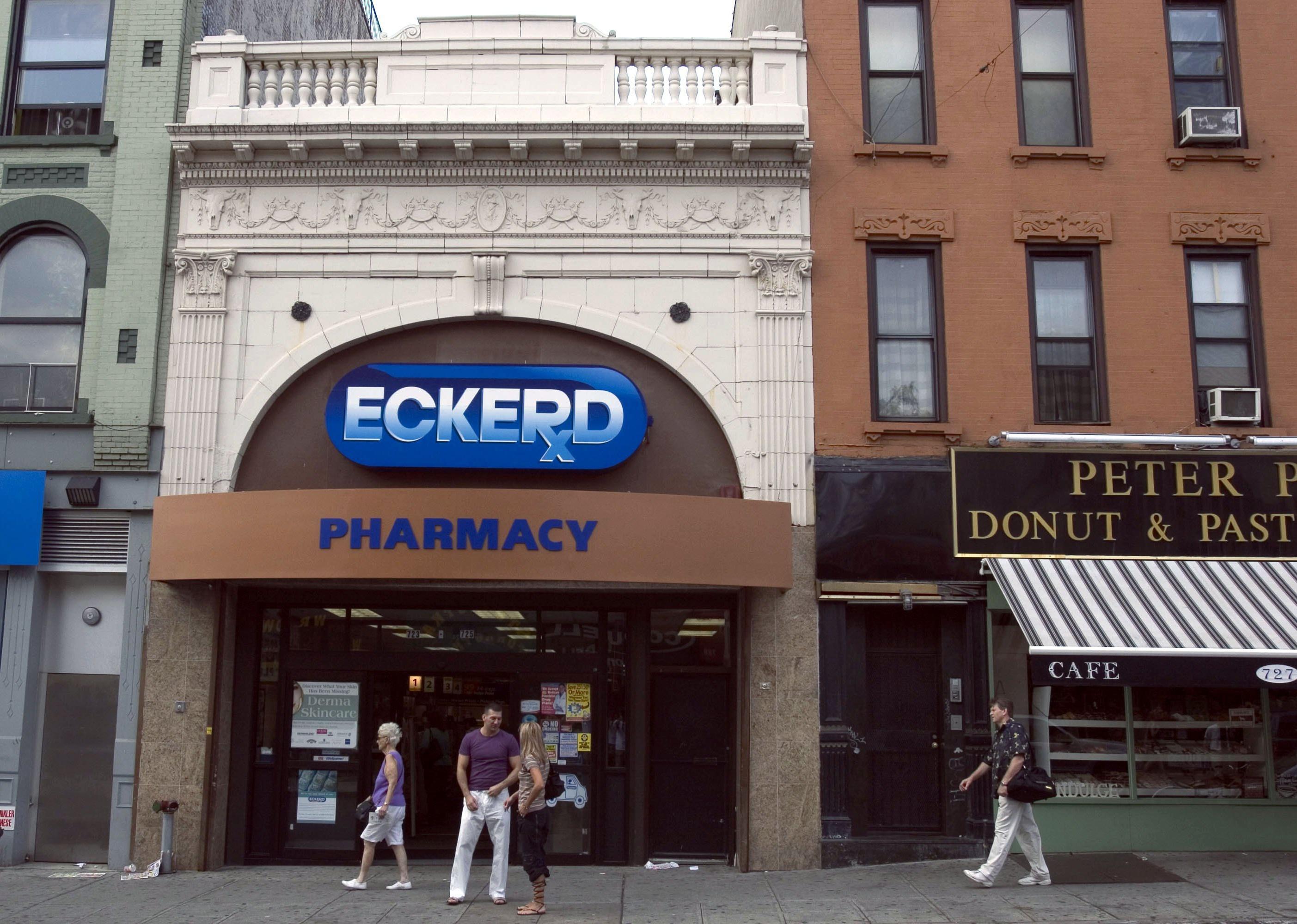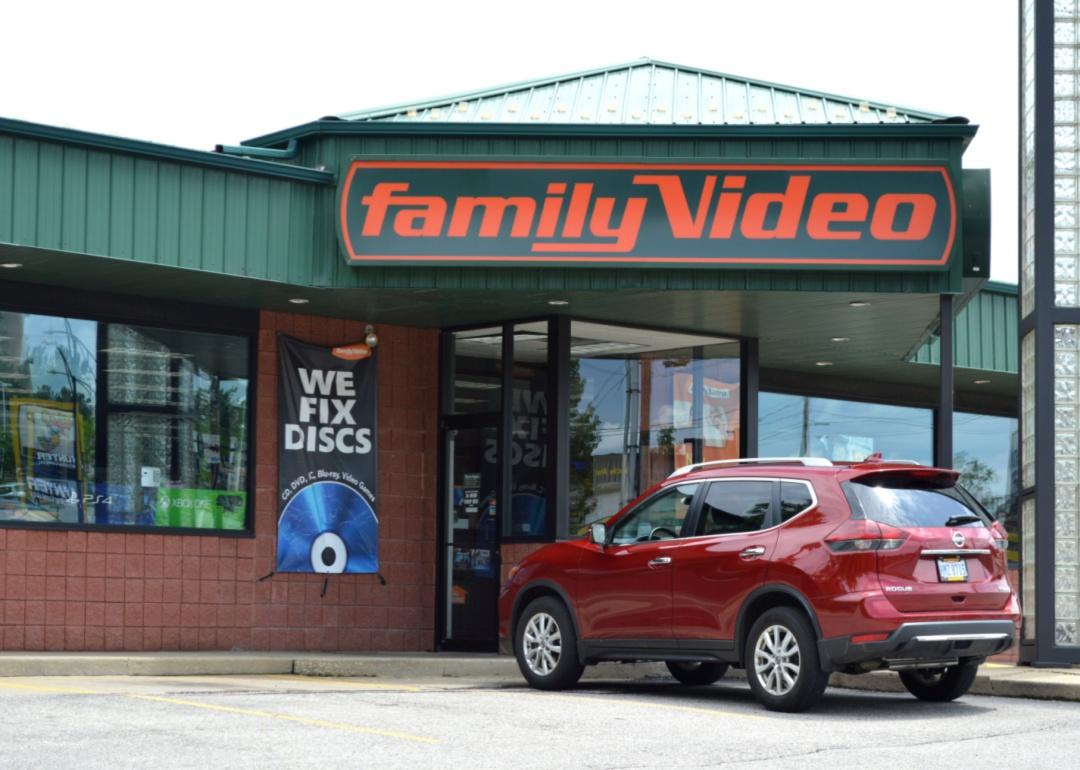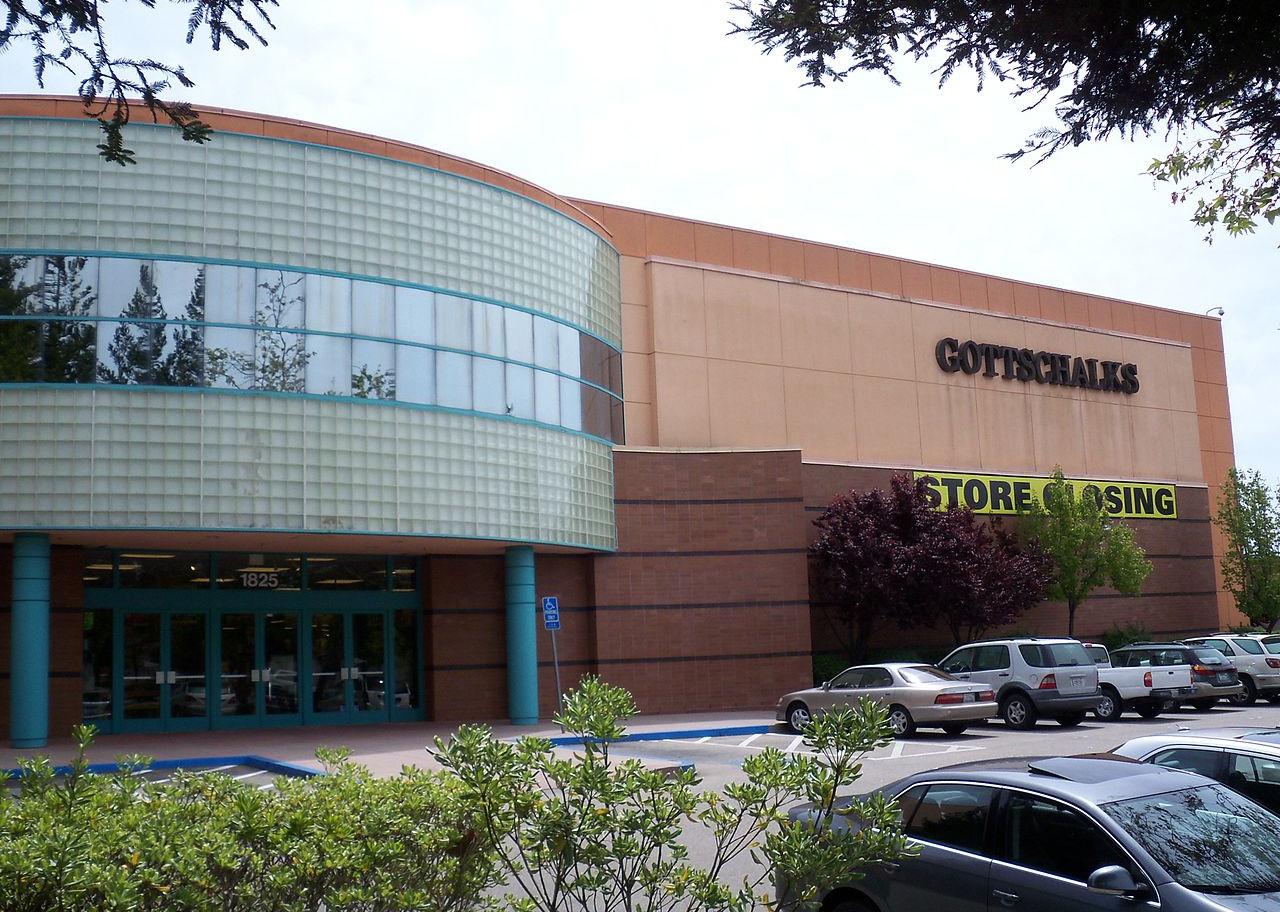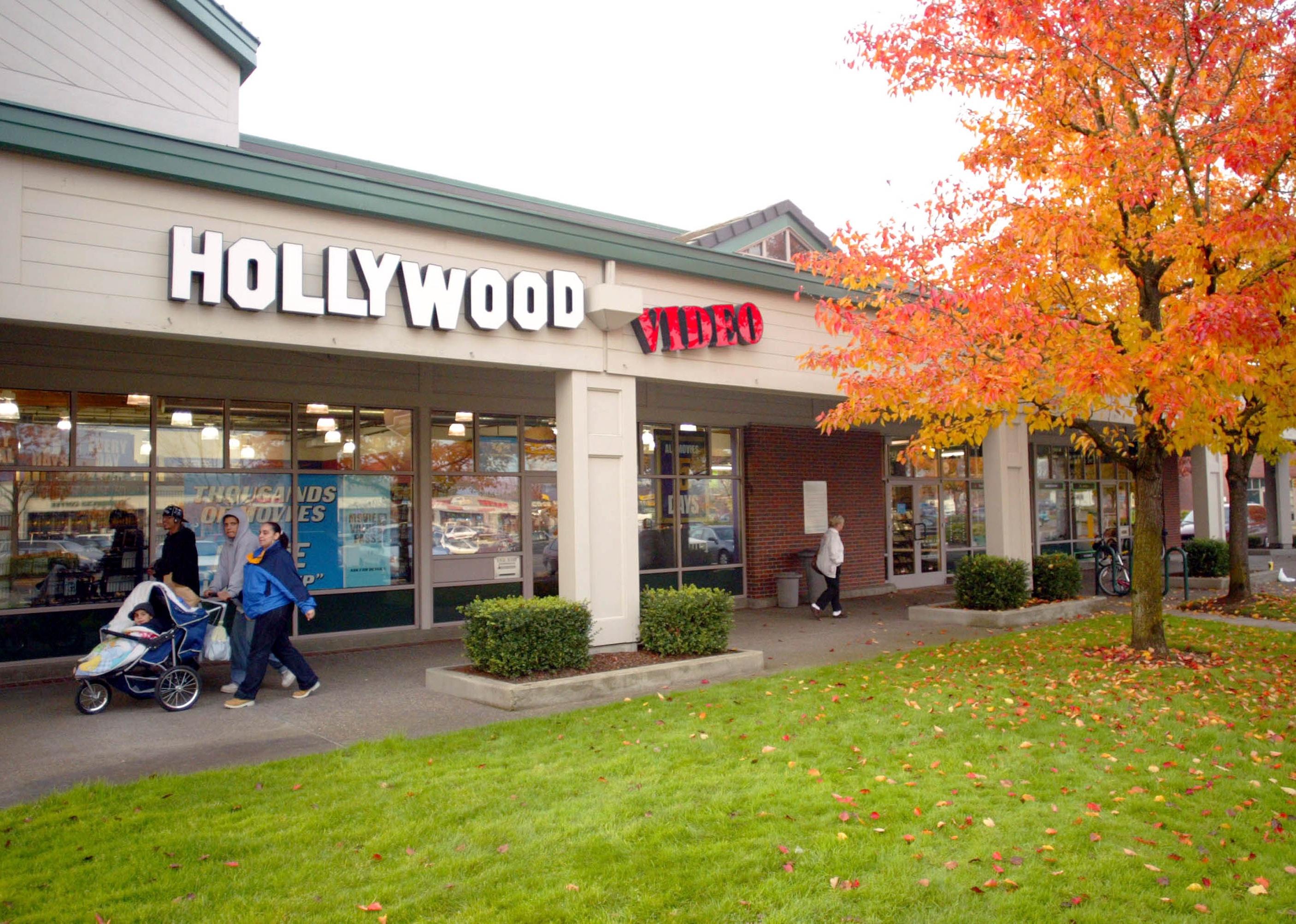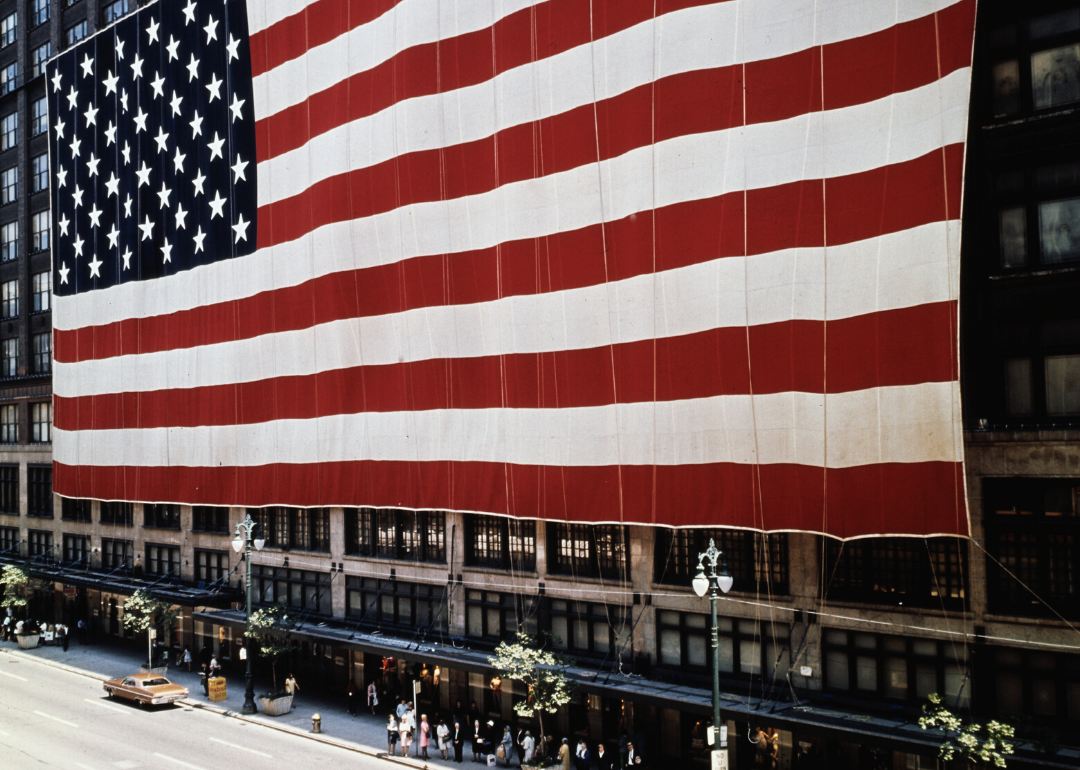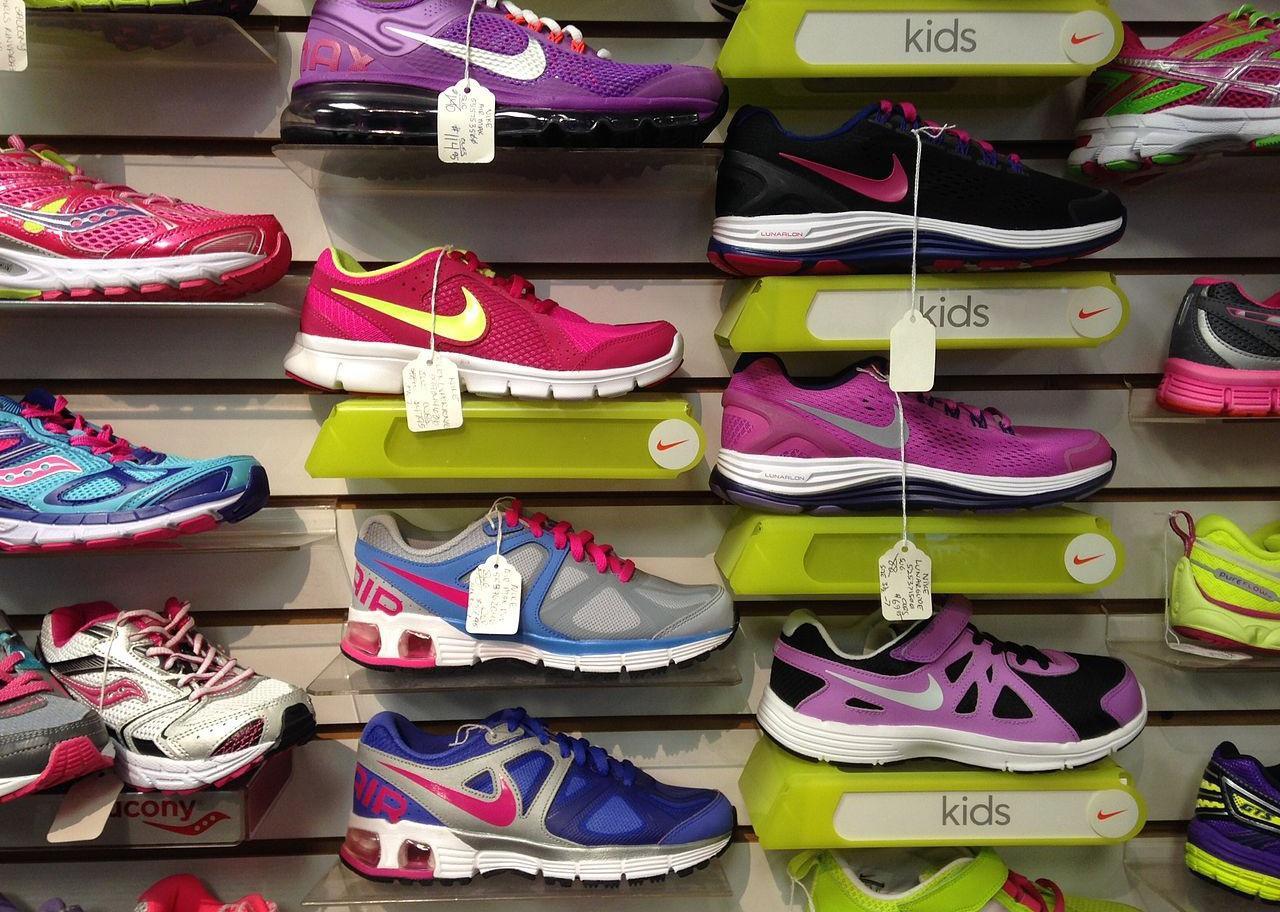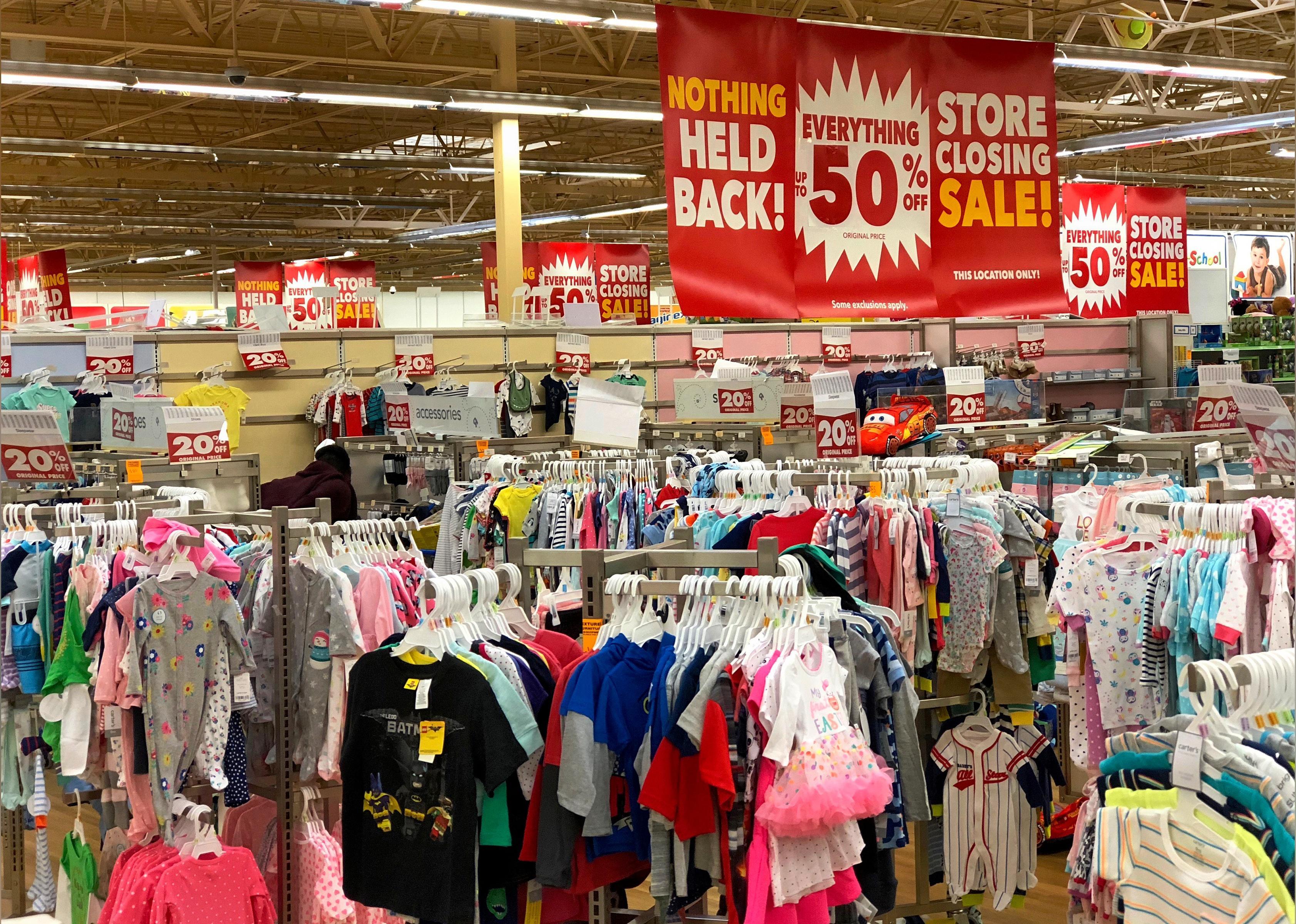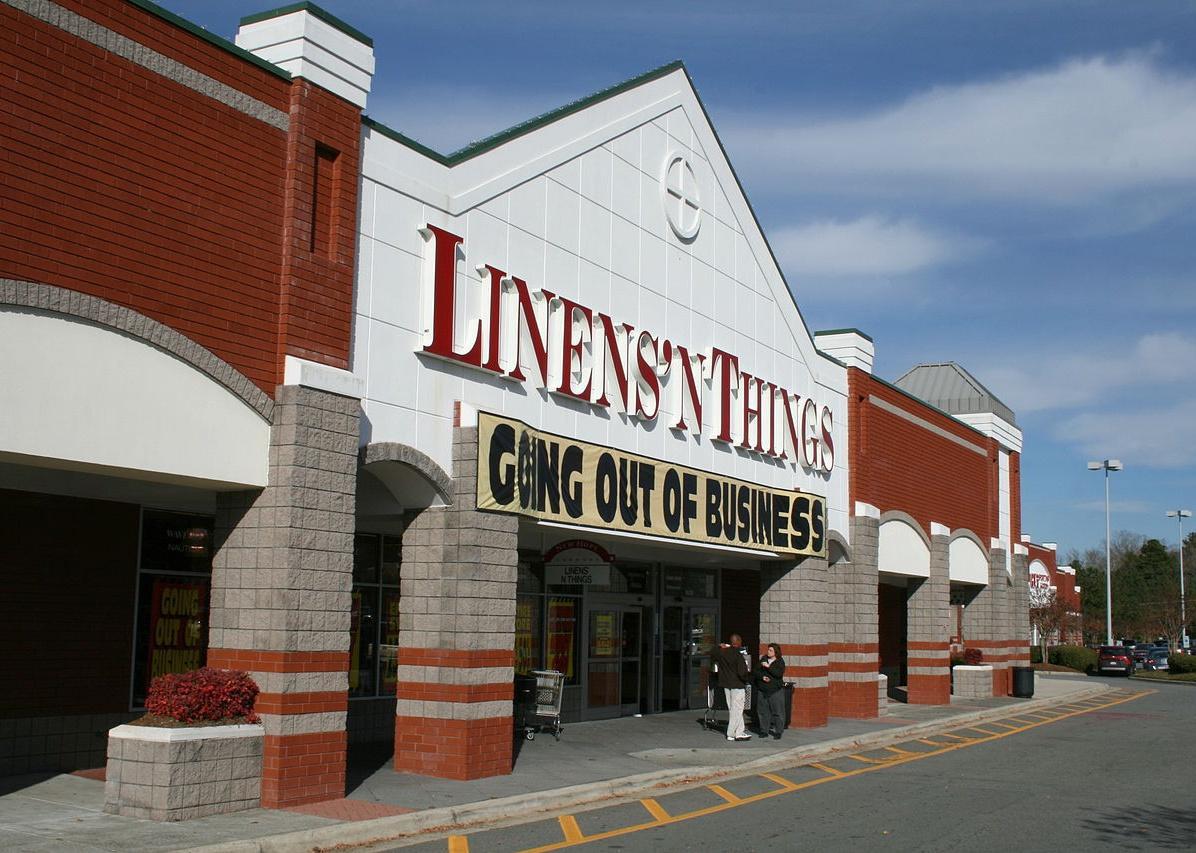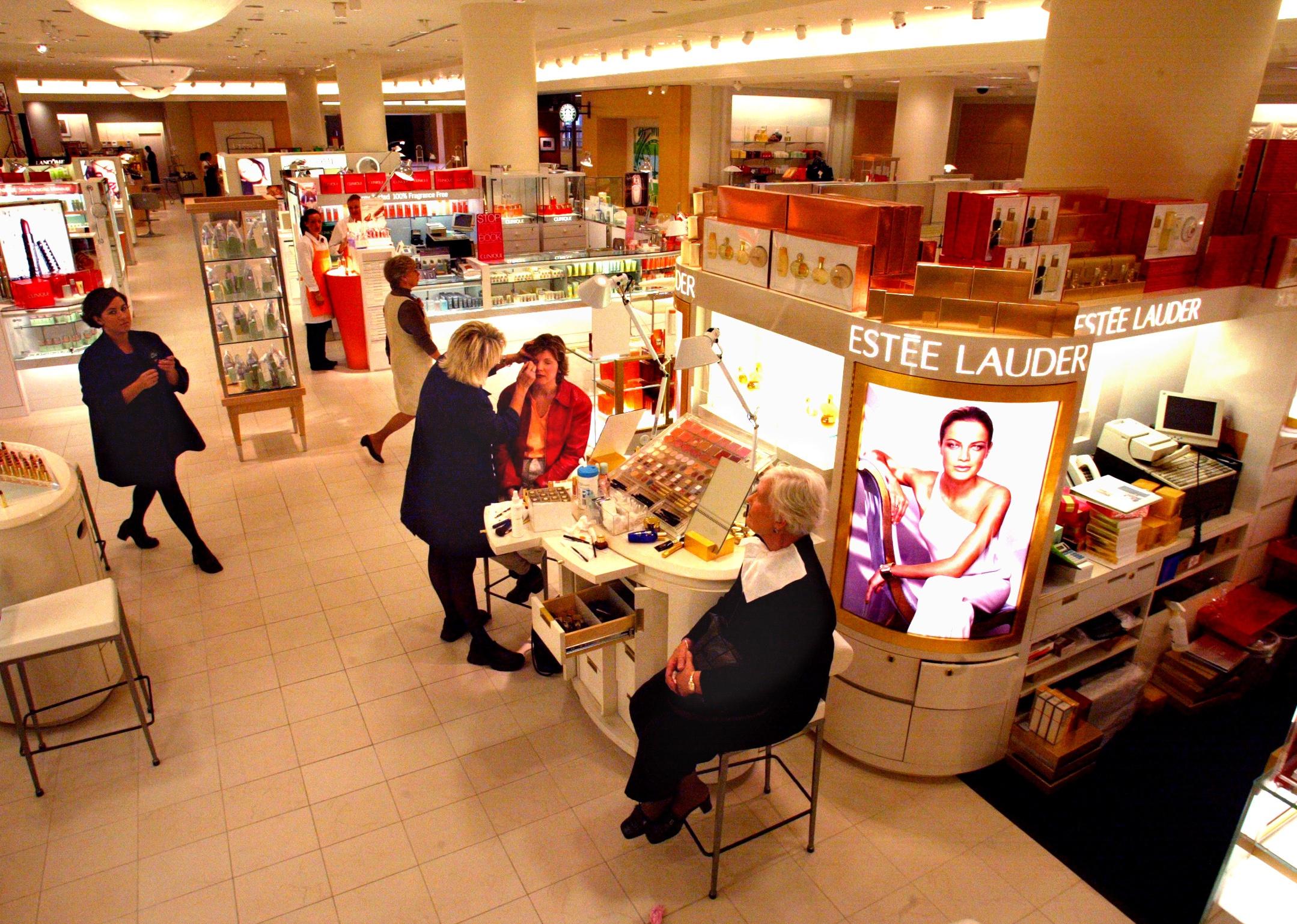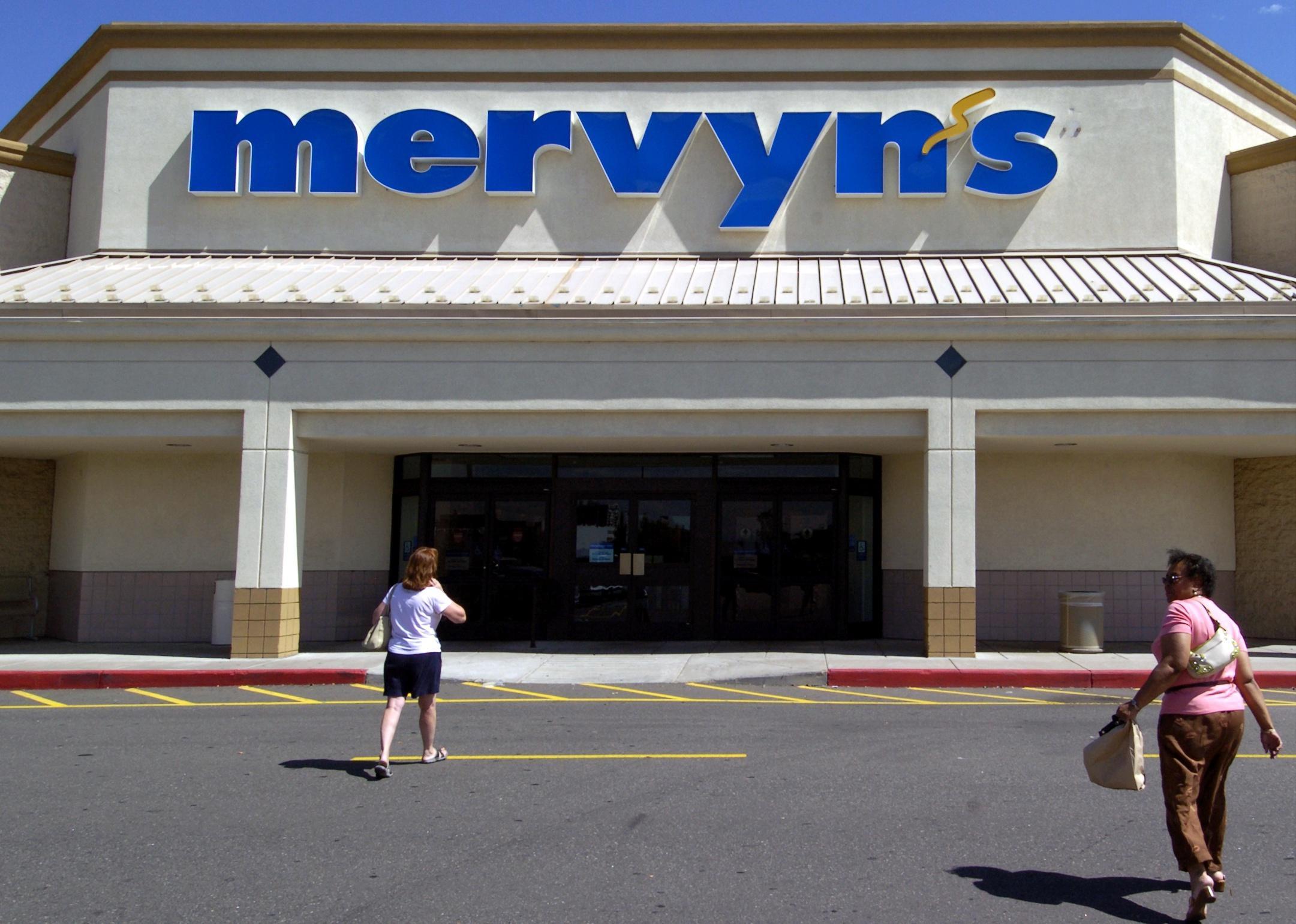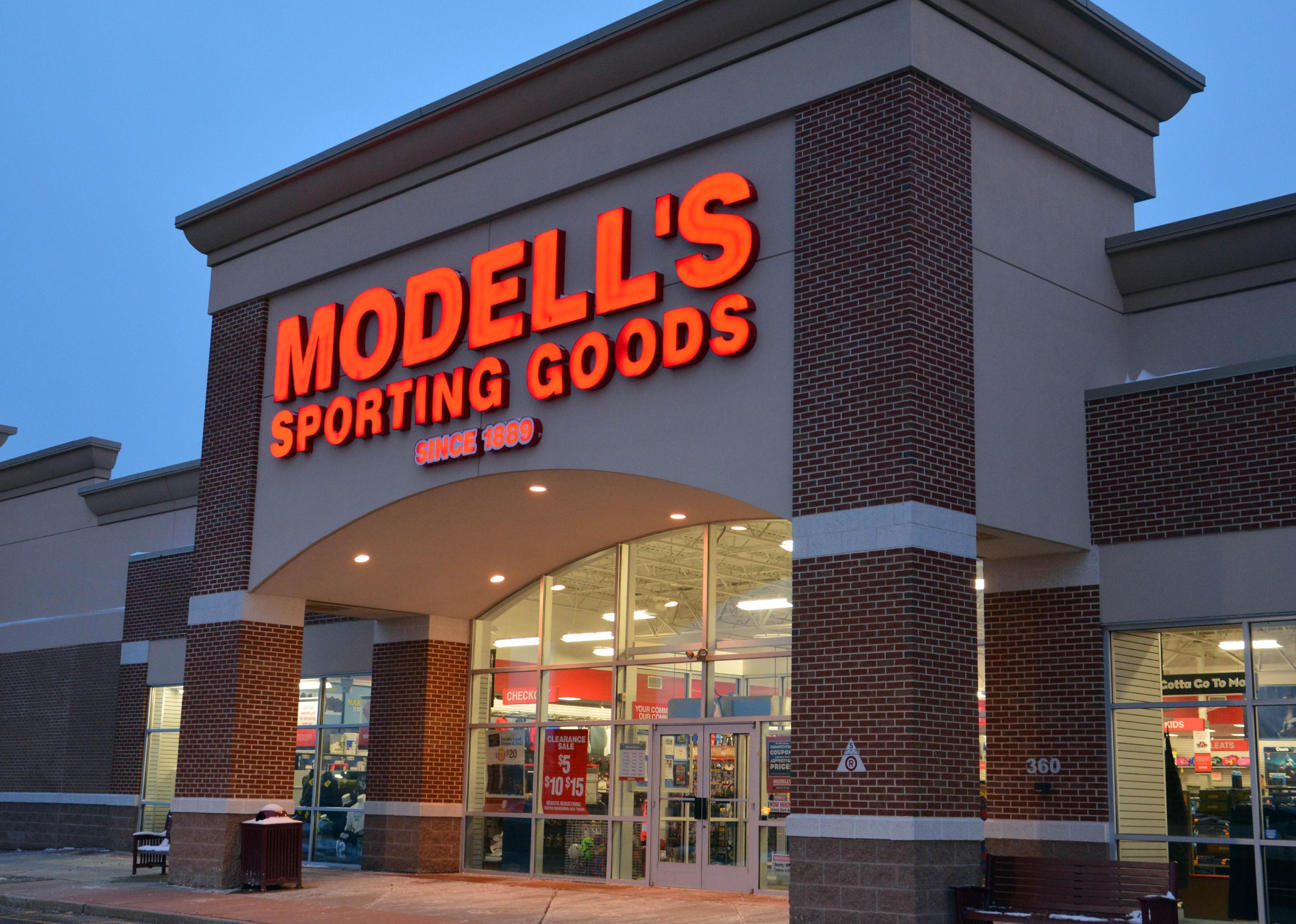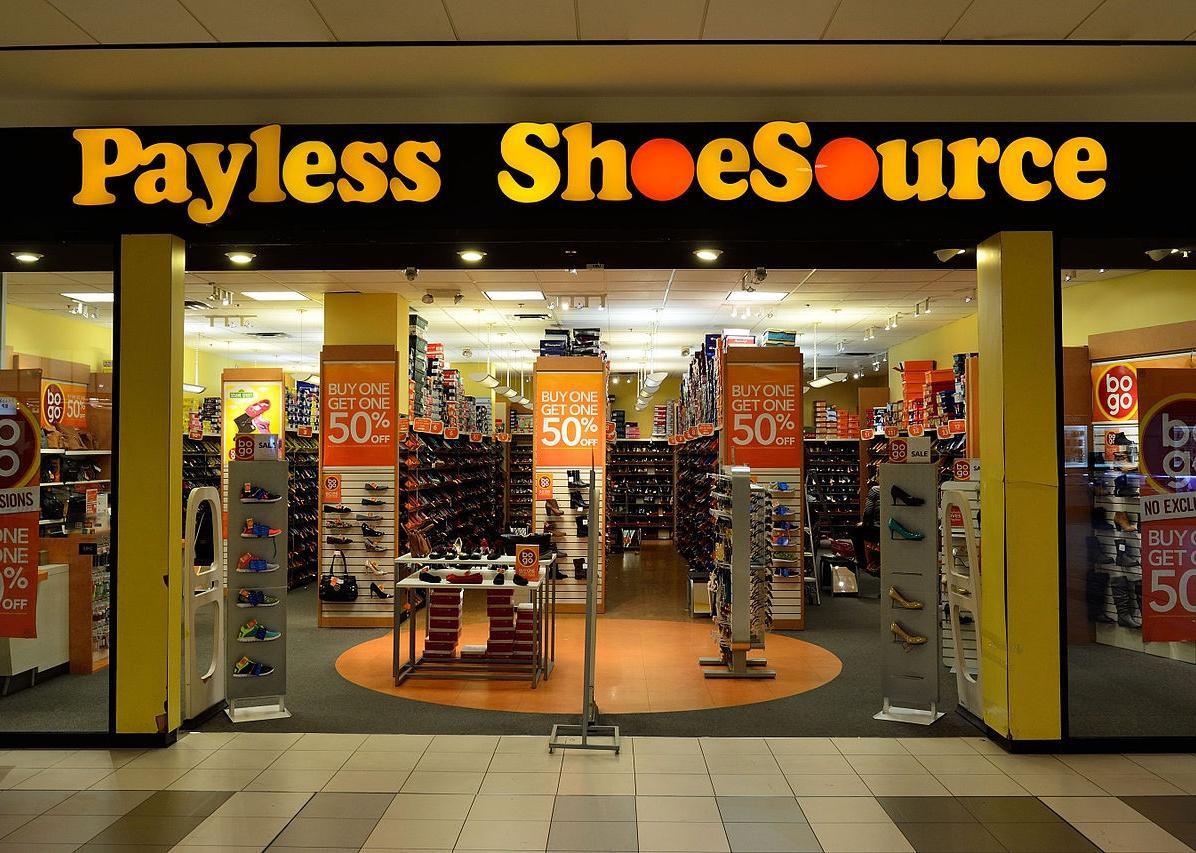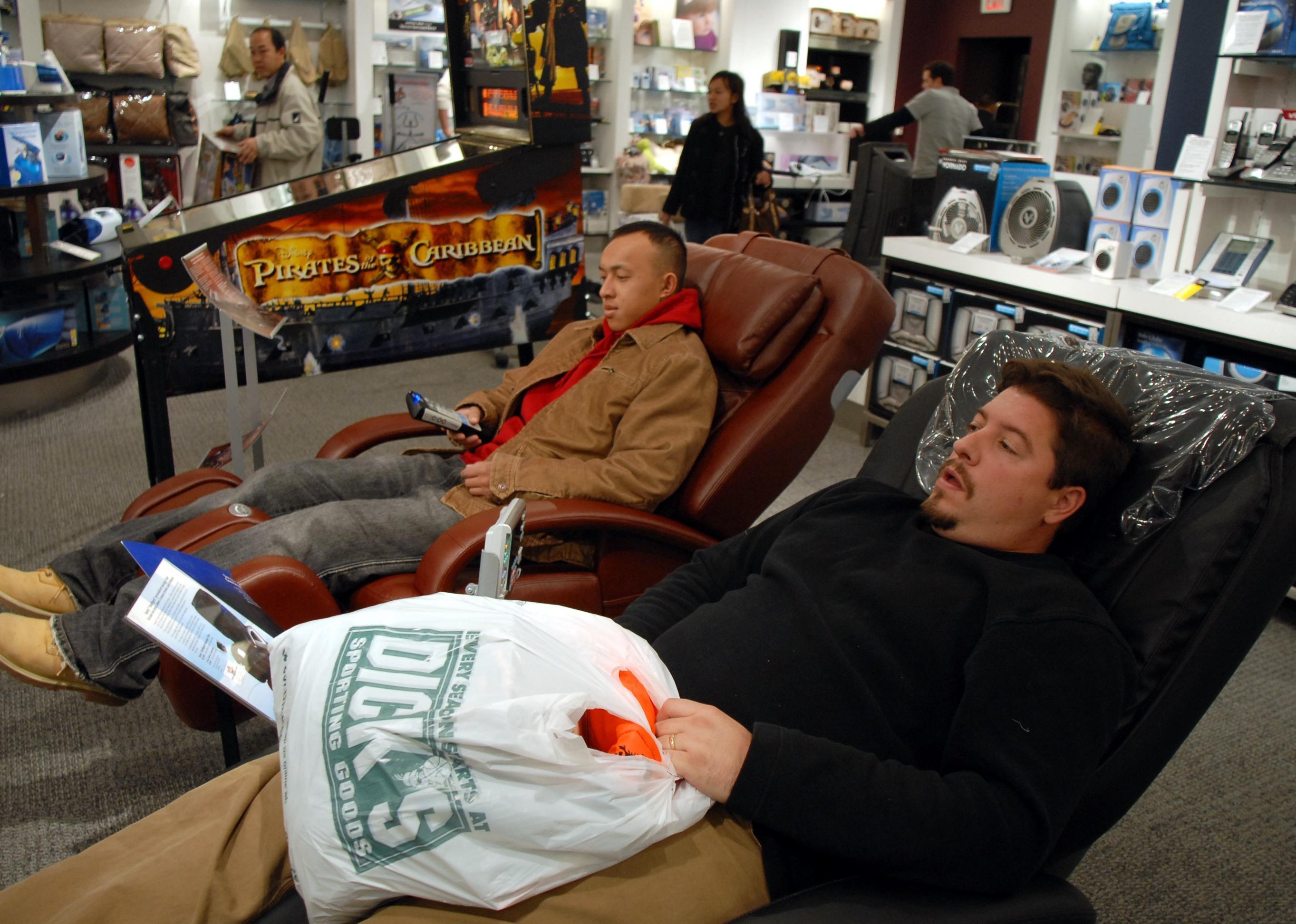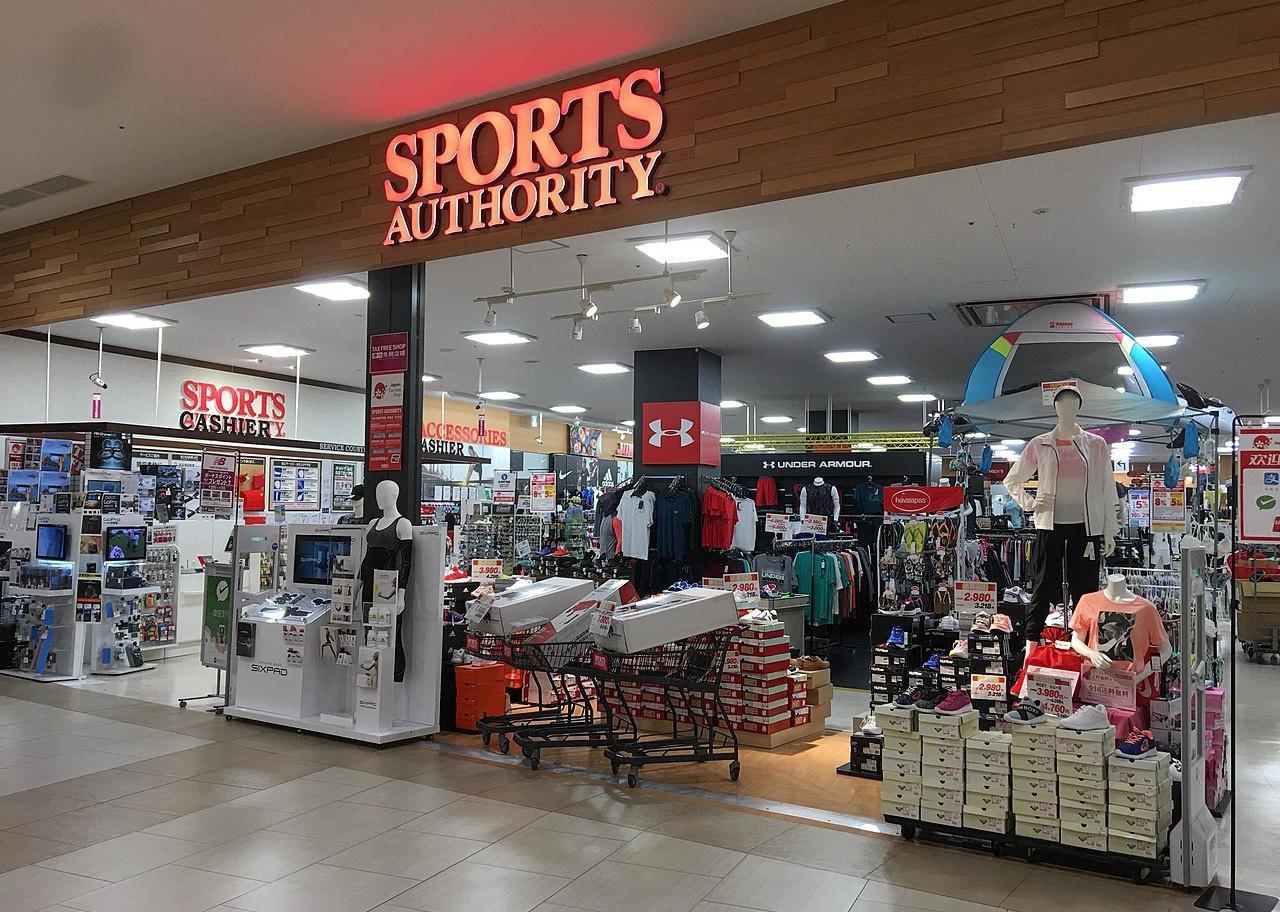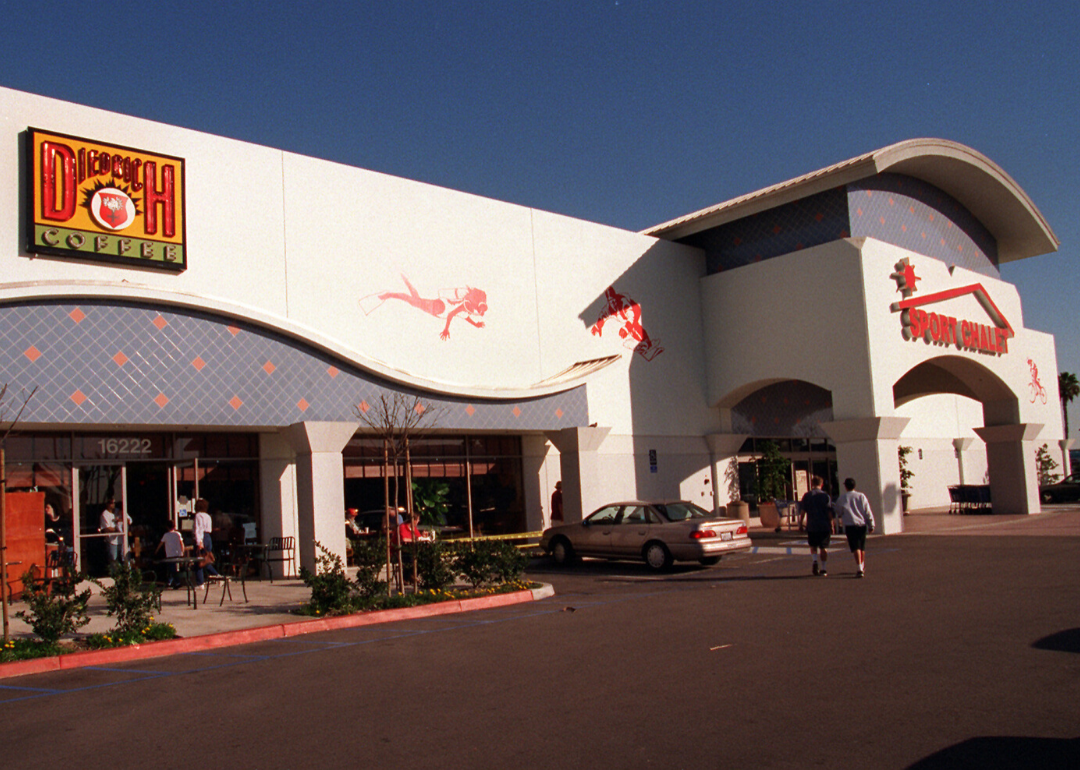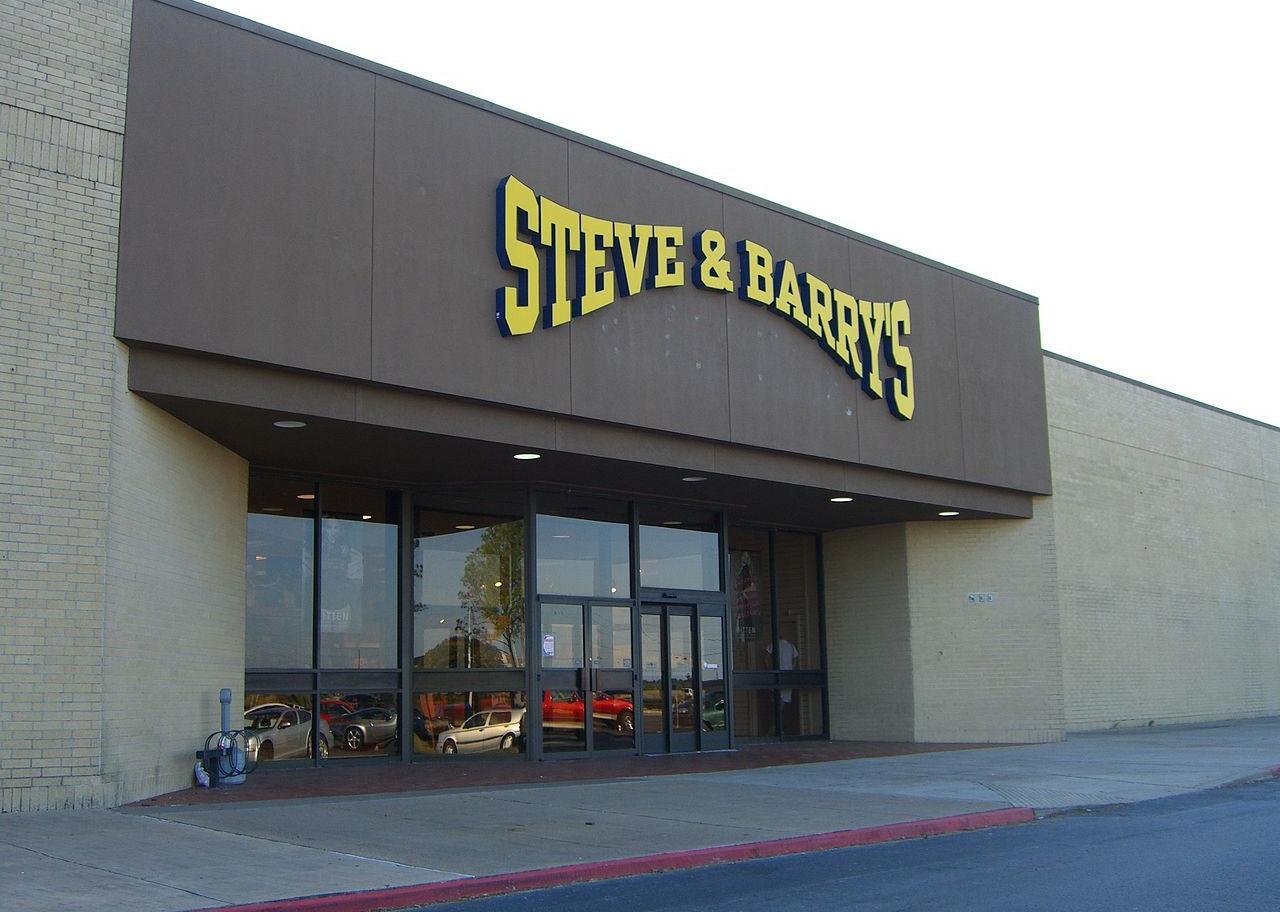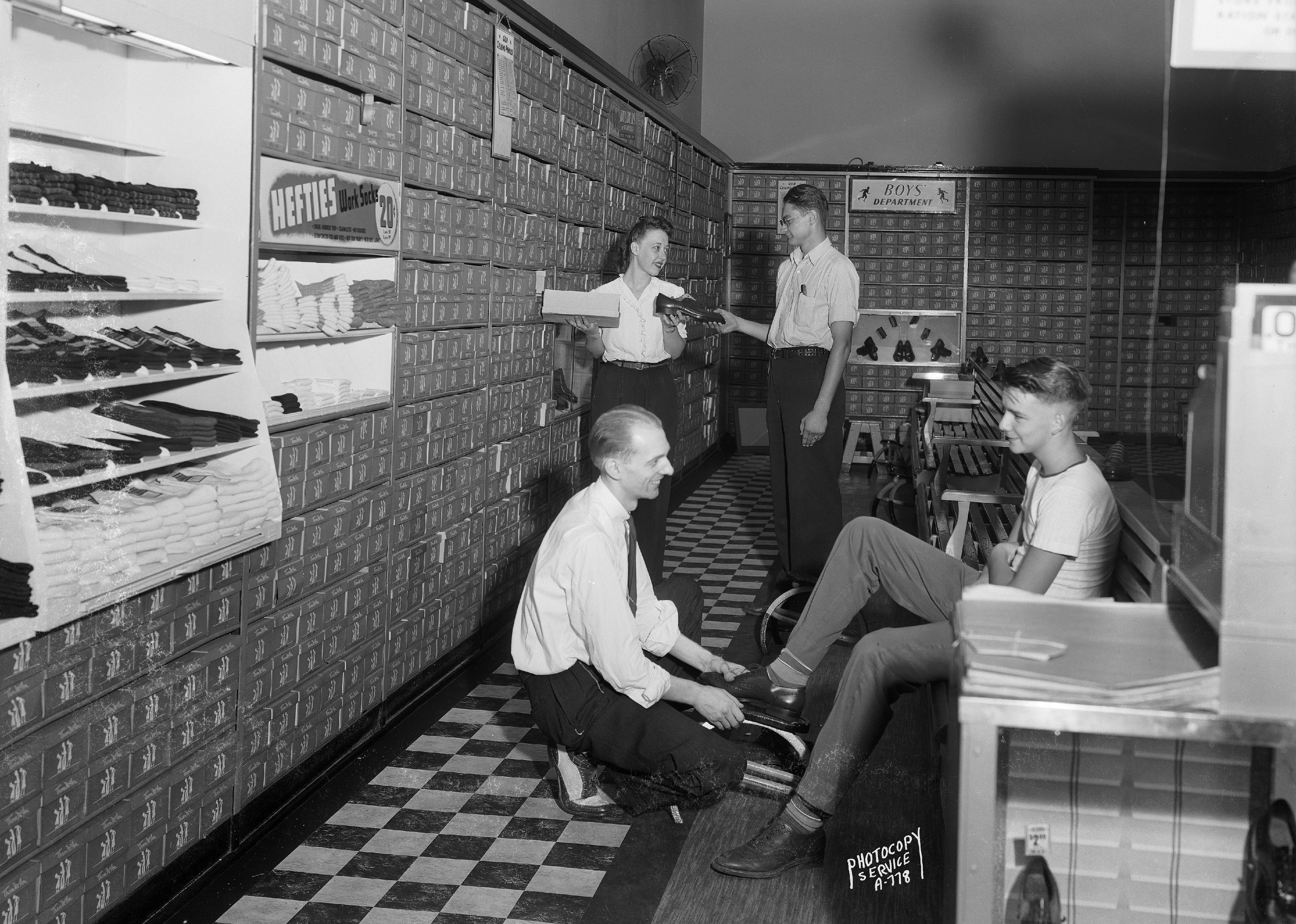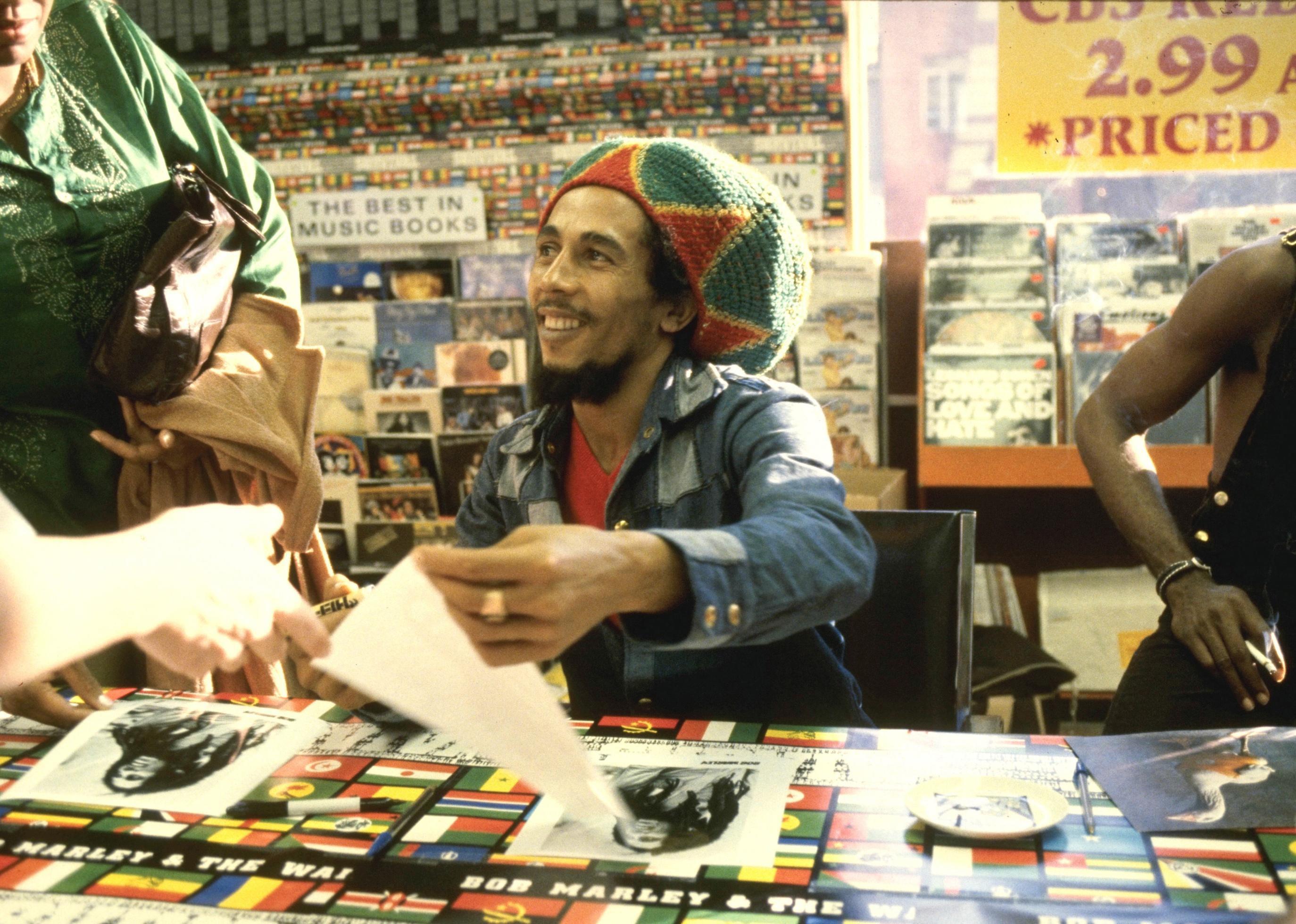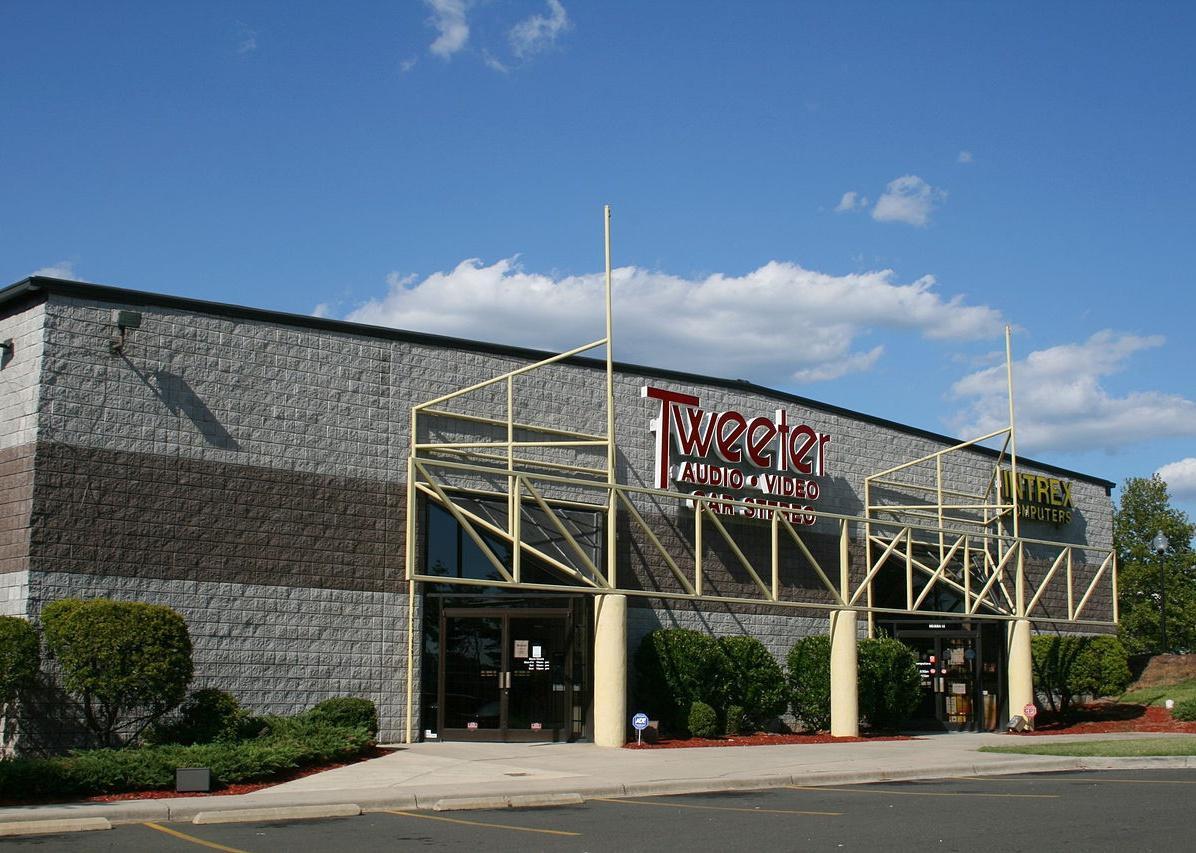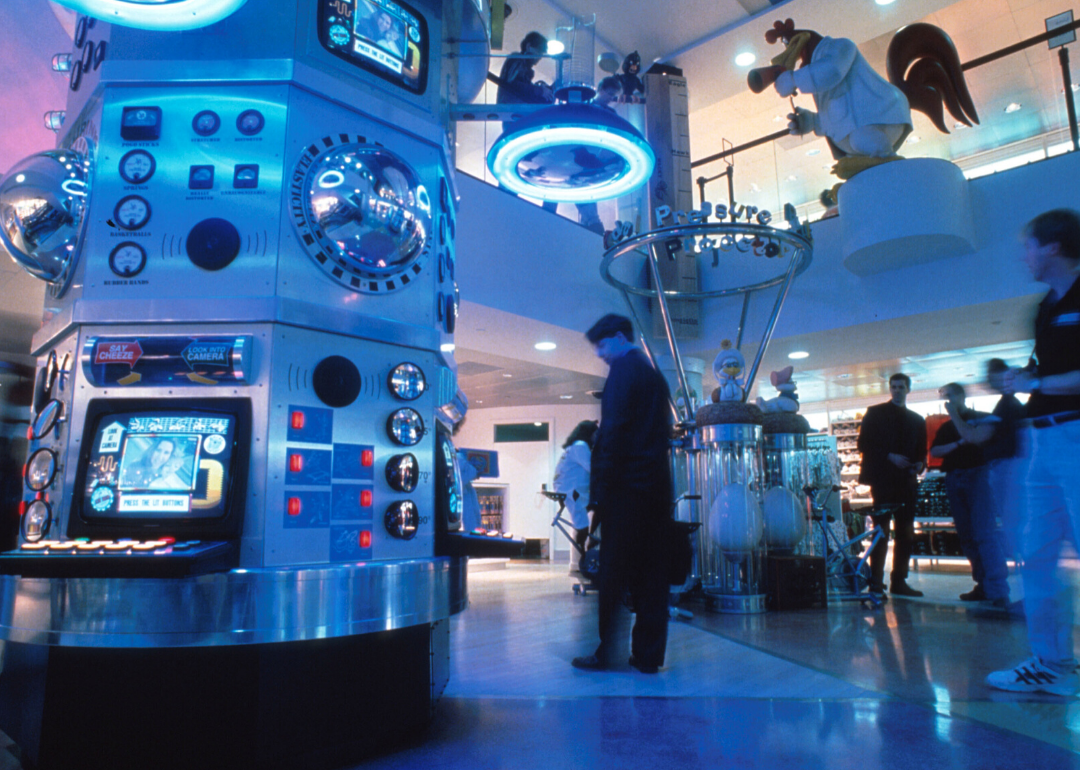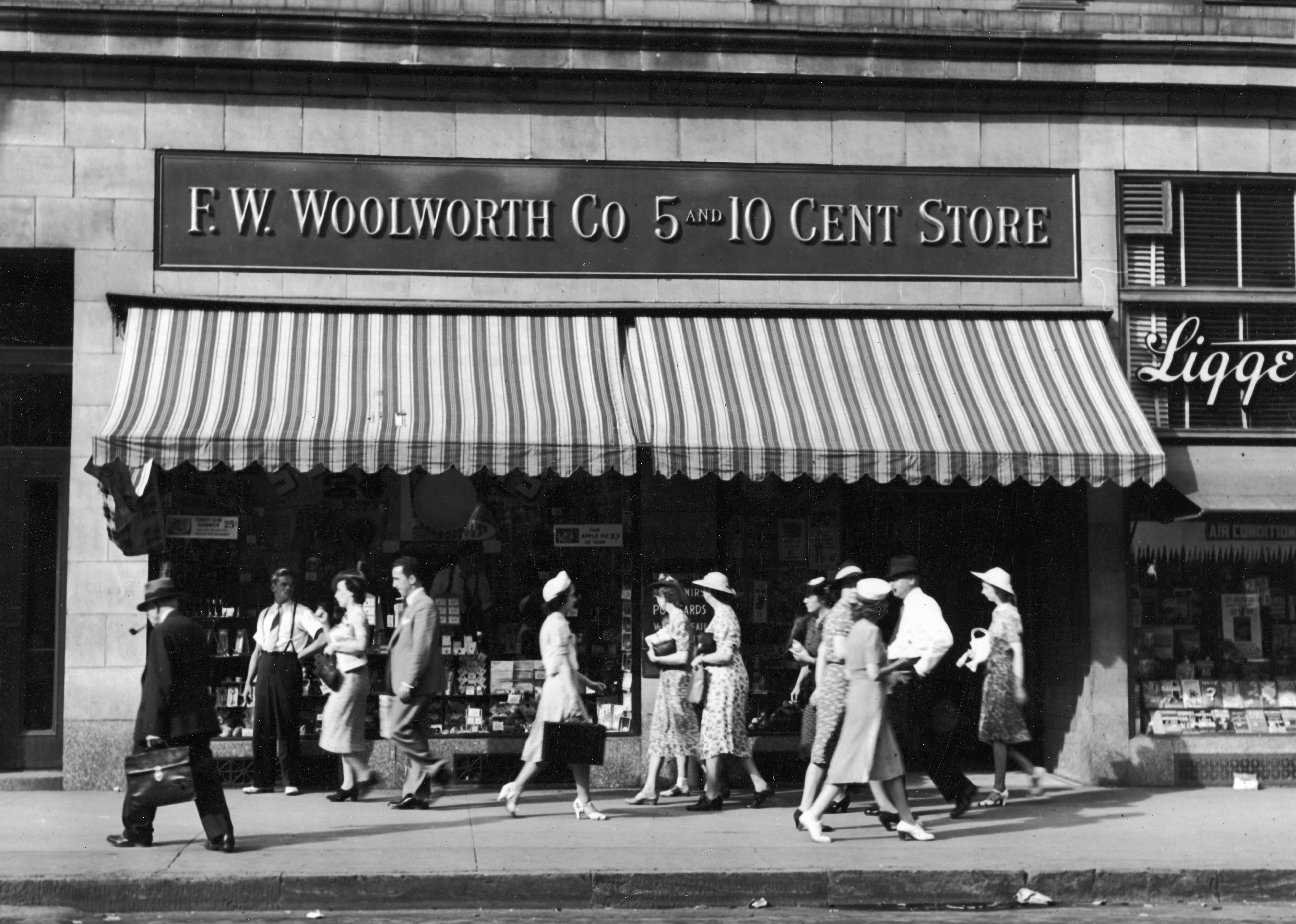Business
Major retail chains that no longer exist
Published
1 year agoon
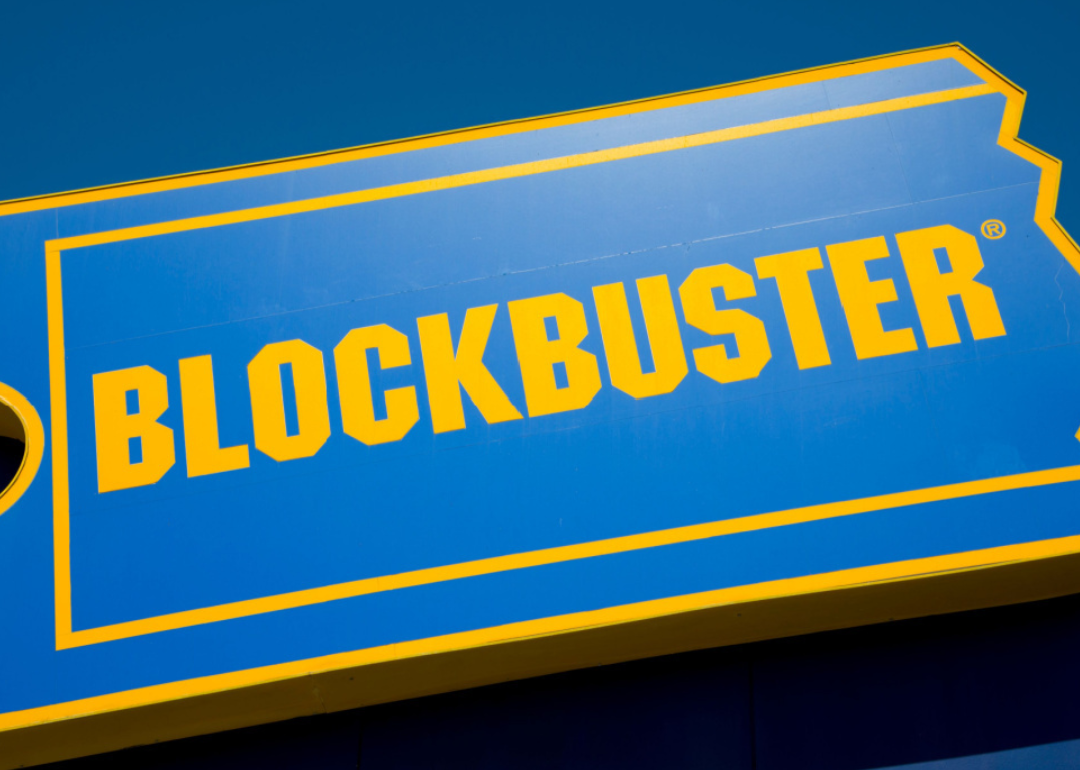
At the start of this decade, many of America’s beloved major retailers announced that they’d be closing their stores—Papyrus, Macy’s, Pier 1 Imports, JCPenney—the list goes on. It’s a pattern that recurs throughout retail history. Chains grow quickly and incur new expenses as they expand. Then they hit the limit of their funding and growth opportunities and downsize to manage their debt and restructuring. Some can recover. Many, however, end up filing for bankruptcy and/or getting bought out and eventually folding.
It’s a familiar cycle. The economy improves, and the market becomes saturated with choice. When the economy slows, dips, and dives, very few can survive. With each cycle, stores that we thought would always be around, stores that defined our childhoods, even our parents’ childhoods, fizzle, fade, and become the stuff of retail history. Some are iconic brands like Tower Records, Thom McAn, and Kids “R” Us.
Stacker reviewed a variety of sources to take a close look at various major retail chains that no longer exist. Many of these chains led the pack at one point in history. Many of them even paved the way for their competitors, who eventually overtook them. Blockbuster, for example, was the largest video retailer worldwide and was valued at $3 billion at its height. Now there’s only one Blockbuster store left on the planet: in Bend, Oregon.
Other chains couldn’t keep up with the rise of e-commerce sites like Amazon. Sharper Image, for example, was once the only place where tech lovers could flock to play with high-end and niche gadgets. But then Amazon started selling similar products online.
While it’s all part of evolution and Darwinian economics, the sad reality is that when these stores die, parts of our memories go with them. Still, it’s a lesson that most businesses must learn: adapt with the times, or be lost forever. Are you ready to see the top 50 major retailers that no longer exist? Keep reading to see if your favorites made the list.
You may also like: Best big cities to live in America
![]()
Anthony92931 // Wikimedia Commons
Ames
– Category: Department store
– Year founded: 1958
– Year defunct: 2002
– Lifetime: 44 years
Before there was Walmart—four years before, to be exact—there was Ames. The discount retailer used to sell a massive range of merchandise, including apparel, electronics, housewares, patio furniture, jewelry, and beyond. After 44 years of business, the corporation filed for bankruptcy, closing 327 stores and leaving 21,500 employees without jobs.
Monorail Orange // Wikimedia Commons
Anchor Blue
– Category: Clothing
– Year founded: 1972
– Year defunct: 2011
– Lifetime: 39 years
Anchor Blue, a teen clothing chain launched in 1972, filed for bankruptcy in 2011 after 39 years of business. At its height, the chain had more than 300 stores in the United States. But it could not survive the 2009 economic downturn. By the time it closed, there were 117 stores, most of which were in California.
Nolichuckyjake // Shutterstock
BI-LO
– Category: Grocery stores and supermarkets
– Year founded: 1961
– Year defunct: 2021
– Lifetime: 60 years
A former Winn-Dixie executive, Frank Outlaw, started the BI-LO supermarket chain in 1961 when he purchased four grocery stores in the Greenville, South Carolina area. Primarily located in the Southeast, BI-LO had hundreds of stores under its banner at its peak in the early 2000s but wound up announcing bankruptcy in 2018. After a substantial effort to restructure, the chain closed up its last locations in 2021.
Pat Greenhouse/TheBoston Globe // Getty Images
Blockbuster
– Category: Video rental
– Year founded: 1985
– Year defunct: 2014
– Lifetime: 29 years
Founded in 1985, Blockbuster was once the entertainment giant of the world, with more than 65 million registered customers and more than 9,000 stores in the United States alone. But the rise of streaming services like Netflix began to eat away at its profits, and in 2014 Blockbuster filed for bankruptcy with more than $900 million in debt.
BrokenSphere // Wikimedia Commons
Borders
– Category: Bookstore
– Year founded: 1978
– Year defunct: 2011
– Lifetime: 33 years
Back in 2011, Borders—a book and music megastore—had to close its 400 stores around the country when the company was liquidated. Unfortunately, much of Borders’ stock was CDs and DVDs, at the critical tipping point when everyone was starting to go digital. Borders also failed to develop an online store, while other retailers like Barnes & Noble moved into online sales. The last year Borders actually made a profit was 2006.
You may also like: Can you guess these famous skylines?
Canva
Builders Square
– Category: Home improvement
– Year founded: 1970
– Year defunct: 1999
– Lifetime: 29 years
When Home Depot and Menards came into the picture, the sun was setting on Builders Square, one of the original large-scale home improvement stores. In 2011, the company filed for Chapter 11 and liquidated its remaining 117 stores. Builders Square had been struggling for a few years before that and had been sold off by Kmart in 1997. Still, the company failed to turn a profit and eventually shut its doors.
Spencer Platt // Getty Images
Century 21
– Category: Department store
– Year founded: 1961
– Year defunct: 2020
– Lifetime: 59 years
Discount department store Century 21 was primarily located in the New York City area, though there were a handful of locations in other Eastern Seaboard locales. In 2020, thanks to diminished foot traffic brought about by the COVID-19 pandemic and poor e-commerce sales, the beloved chain filed for Chapter 11 bankruptcy, devastating budget-bound fashionistas everywhere. Not all hope is lost, however, as the company announced in 2022 that it would be reopening its lower-Manhattan flagship store, albeit under a slightly different name—Century 21 NYC—meaning we might see the return of this designer giant after all.
Scott Olson // Getty Images
Circuit City
– Category: Electronics
– Year founded: 1949
– Year defunct: 2009
– Lifetime: 60 years
Back in the 1970s and 1980s, Circuit City was on top of the electronics game. It helped to pioneer the big-box concept, making a one-stop shop for everything from televisions and stereos to refrigerators and automobiles, which spun off into CarMax. At its height, Circuit City had 1,520 stores across the United States and Canada. But in the 1990s, that began to change. CBS News analysis attributed this to stores becoming too big—and therefore too impersonal—and the fact that it stopped paying commissions to its sales team. When the financial crisis struck, Circuit City began closing stores and laying off its employees, eventually closing due to bankruptcy.
BRUCE BISPING/Star Tribune // Getty Images
CompUSA
– Category: Electronics
– Year founded: 1984
– Year defunct: 2012
– Lifetime: 28 years
CompUSA, a consumer electronics retailer, ran into trouble in 2007 after prices dropped on its most lucrative product, personal computers. With the rise of stores like Best Buy, CompUSA struggled to make ends meet. It eventually filed for bankruptcy and sold its 103 stores. That is until the company made a brief comeback with a revamped sales approach, which also failed. It officially went out of business in 2012.
SVEN NACKSTRAND/AFP // Getty Images
Crazy Eddie
– Category: Electronics
– Year founded: 1971
– Year defunct: 2012
– Lifetime: 41 years
Old-school New Yorkers will remember the tale of Crazy Eddie quite well. The commercial alone is legendary. What started as an electronics storefront in Brooklyn grew to become the largest commercial electronics store in the New York metropolitan area, in addition to 43 stores up and down the Eastern Seaboard. But mostly what New Yorkers remember is how it all came crashing down when Eddie Antar, the founder, was discovered to be skimming money and manipulating the stock market. He fled the country to Israel and was later extradited to the U.S., where he served seven years in prison.
You may also like: Oldest cities in America
Canva
Crown Books
– Category: Bookstore
– Year founded: 1977
– Year defunct: 2001
– Lifetime: 24 years
Crown Books, a book retailer known for its deep discounts, came onto the scene in Maryland in 1977, and subsequently began to expand all over the country. Over the years, due to the death of its parent company and family drama between the owners, Crown Books went through a series of bankruptcies and was completely out of business by 2001.
Mike Mozart // Wikimedia Commons
Delia’s
– Category: Clothing
– Year founded: 1993
– Year defunct: 2014
– Lifetime: 21 years
Women in their 30s today still remember Delia’s, the teen fashion chain that had 95 stores in malls across America. But as fast fashion brands like H&M, Forever 21, and Zara became more popular, Delia’s began to struggle. The company filed for bankruptcy in 2014: It had not turned a profit since early 2011.
Retaildesigner // Wikipedia
Dominick’s
– Category: Grocery store
– Year founded: 1918
– Year defunct: 2013
– Lifetime: 95 years
Chicagoans remember Dominick’s, a real-life example of the American Dream. Founded by Dominick DiMatteo more than 100 years ago, the grocery store chain became a beloved icon of the Chicago area. It was purchased by Safeway in 1998. At the time there were 116 stores and $2.6 billion in sales. Eventually, Dominick’s began to lose customers because it failed to adapt to shifts in the industry and lost customers because it didn’t see value in the prices of its goods. Customers started fleeing to competitors, and eventually operational costs were too high to maintain.
rblfmr // Shutterstock
Dressbarn
– Category: Clothing
– Year founded: 1962
– Year defunct: 2019
– Lifetime: 57 years
In 2019, all 650 Dressbarn stores were among the thousands of retail shops that closed. In Dressbarn’s case, the problems were declining customer numbers and sales volumes. Its parent company, Ascena Retail Group, owns Ann Taylor and Loft, which remain open.
Michael Brown // Getty Images
Eckerd’s
– Category: Drug store
– Year founded: 1898
– Year defunct: 2007
– Lifetime: 109 years
For more than 100 years, Eckerd’s was much more than a household name. It started in 1898 in Erie, Pennsylvania, when J. Milton Eckerd opened his first store. Over time, the empire had more than 2,000 stores in 20 states. In 2007, Rite-Aid Corporation acquired Eckerd’s and converted its stores to Rite-Aids in the quest to be the country’s largest drugstore chain, competing with Walgreens and CVS.
You may also like: Comparing minimum wage to the cost of living in every state
Eric Glenn // Shutterstock
Family Video
– Category: Video rental
– Year founded: 1978
– Year defunct: 2022
– Lifetime: 44 years
When Family Video finally went out of business in 2022, it was the last remaining brick-and-mortar media retail chain in the country. Located primarily in more rural towns and mid-sized cities, initially to avoid competition with Blockbuster, the company had managed to survive for so long because it owned all of the land and buildings its shops were built on and in. It also had worked hard to diversify its offerings, at one point even partnering with a pizza brand to give customers a one-stop-shop for their night in. Like many other businesses on our list, Family Video blamed the pandemic for its failure, citing the lack of foot traffic and fewer movie releases as major problems.
Canva
Frank’s Nursery & Crafts
– Category: Home decor and craft stores
– Year founded: 1957
– Year defunct: 2004
– Lifetime: 47 years
Frank’s Nursery & Crafts, one of the country’s largest lawn and garden retailers, was founded in 1957 in Detroit. The store stocked its shelves with live plants, fertilizers, and garden tools. But, a weakening economy took its toll on the chain, which at the time of its closing operated 169 stores in 14 states. It filed for bankruptcy in 2004 after listing $141 million in debt and failing to find a loan to bail it out.
Canva
Friedman’s
– Category: Jewelry
– Year founded: 1920
– Year defunct: 2008
– Lifetime: 88 years
The Oklahoma jewelry chain Friedman’s Jewelers was founded in 1920 and remained a family-run business until 1990. It had 20 stores across the state. But for a few years before closing, the company had experienced financial instability and allegations of wrongdoing, including a slew of civil lawsuits. Friedman’s filed for Chapter 11 bankruptcy protection in 2005.
Michael N. Todaro/Golfsmith // Getty Images
Golfsmith
– Category: Sports
– Year founded: 1967
– Year defunct: 2016
– Lifetime: 49 years
Once the largest golf retailer in the country, and the world, Golfsmith International filed for bankruptcy due to a multi-million dollar mountain of debt. When it filed under Chapter 11, the chain had 109 stores in the United States.
Mrwrite // Wikimedia Commons
Gottschalks
– Category: Department store
– Year founded: 1904
– Year defunct: 2009
– Lifetime: 105 years
One of the biggest department store chains in America, Gottschalks ended its 105-year legacy with a court-ordered liquidation. Founded by Emil Gottschalk, a German immigrant in 1904, Gottschalks had 58 department stores in the Western U.S. When it folded, the company had somewhere between $100 million and $500 million in debt and up to 25,000 creditors.
You may also like: How much the typical home cost in your state in 1950
Craig Mitchelldyer // Getty Images
Hollywood Video
– Category: Video rental
– Year founded: 1988
– Year defunct: 2010
– Lifetime: 22 years
Hollywood Video was yet another Netflix casualty. Falling victim to losing customers thanks to the rise of DVDs through the mail and streaming sites, Hollywood Video closed its 1,900 remaining stores in 2010. The company reported debts between $500 million and $1 billion when it made the decision.
Bettmann // Getty Images
Hudson’s
– Category: Department store
– Year founded: 1881
– Year defunct: 2001
– Lifetime: 120 years
The J.L. Hudson Company, aka Hudson’s, was a Detroit legend. Opened in 1911 by Joseph Lowthian Hudson, the iconic Detroit department store was an anchor for the then-thriving city. At the time, it was the second-biggest department store in America, second only to Macy’s in New York. Hudson’s was also the tallest department store in the world at one time. Over the years, however, Detroit’s population began to dwindle as the economy of the city declined. As the people faded away, so did Hudson’s, including stores in the suburbs and elsewhere around the nation. The flagship store closed in January 1983 after 102 years in business. The building stood empty until 1998 when it was demolished, ending an era for Detroit.
MarkBuckawicki // Wikimedia Commons
Just for Feet
– Category: Shoes
– Year founded: 1977
– Year defunct: 2004
– Lifetime: 27 years
Just For Feet was one of the original superstores in America. Founded by Harold Ruttenberg, the first store opened in 1988 in Birmingham, Alabama, offering a massive selection of athletic shoes at deeply-discounted prices. The brand began to expand like wildfire. Just for Feet was named America’s sixth-fastest-growing company by Fortune magazine in 1997. In 1999, Ruttenberg scored an enviable time slot for a Super Bowl ad, but the commercial that ran was so culturally and racially insensitive that it spiraled into a host of image issues for Just for Feet. The company was forced to file for Chapter 11, and its assets were sold in 2000.
Philip Rink Jr. // Shutterstock
Kaufmann’s
– Category: Department store
– Year founded: 1871
– Year defunct: 2006
– Lifetime: 135 years
Kaufmann’s Department Store, an icon of historic Pittsburgh, was founded in 1871 by Jason and Isaac Kaufmann, two brothers who had emigrated from Germany. The business grew quickly and acquired several adjacent addresses. Over the years, the building received many interior touches and updates, many of which are icons themselves, like the Kaufmann clock and the grand staircase. This building remained the flagship, as other branches popped up in Pennsylvania, Ohio, and New York. In 2006, the brand and regional branches were purchased by and converted into Macy’s.
Jeff Gritchen/Digital First Media/Orange County Register // Getty Images
KB Toys
– Category: Toys
– Year founded: 1922
– Year defunct: 2009
– Lifetime: 87 years
From 1922 to 2009, KB Toys was America’s reigning toy store, with more than 1,300 stores across the country. Eventually, however, the company could not keep up with competitor Toys “R” Us, which acquired KB Toys’ website, trademarks, and intellectual property rights. There was talk of a KB Toys revival after Toys “R” Us went out of business, but that has yet to come to fruition.
You may also like: Best places to retire in America
Sheila Fitzgerald // Shutterstock
Kids ‘R’ Us
– Category: Clothing
– Year founded: 1983
– Year defunct: 2004
– Lifetime: 21 years
In 1983, Kids “R” Us opened as an offshoot of Toys “R” Us. The company sold children’s clothing at discount prices. The company was open for 20 years, with 146 stores. It closed in 2004 following prolonged disappointing sales.
Ildar Sagdejev // Wikimedia Commons
Linens ‘n Things
– Category: Housewares and accessories
– Year founded: 1975
– Year defunct: 2008
– Lifetime: 33 years
Linens ‘n Things was a popular niche retailer that sold household items. At its height, it had 589 stores all over the country. Its demise was caused by a variety of things, including a decline in housing sales, higher prices for goods made in China, and the burden of paying $650 million in debt. By 2008, the company had filed a reorganization plan but was forced to have a liquidation sale.
MARLIN LEVISON/Star Tribune // Getty Images
Marshall Field’s
– Category: Department store
– Year founded: 1852
– Year defunct: 2006
– Lifetime: 154 years
Marshall Field’s, whose flagship was in Chicago, was an icon for the Windy City. Founded in 1852, the original store on State Street was once the largest in the world. The brand expanded and added more department stores all over the country. Eventually, through a series of sales to various other retailers, the then-parent company of Marshall Field’s, the May Company, was acquired by Federated Department Stores, Inc., the operator of Macy’s, and Marshall Field’s became part of that empire.
SKIDZ // Wikimedia Commons
Merry-Go-Round
– Category: Clothing
– Year founded: 1968
– Year defunct: 1996
– Lifetime: 28 years
Merry-Go-Round, the flagship brand of Merry-Go-Round Enterprises, was one of the more popular fashion brands in the 1980s and 1990s. In fact, the company purchased the Chess King chain in 1993, which doubled its size. But after being one of the leaders in fashion for a few decades, a few false moves started to put it on a decline—namely, the company bet on styles that just weren’t popular with teens at the time. Eventually, it was forced to file for Chapter 11 and began to liquidate assets in 1996.
Jerry Cleveland/The Denver Post // Getty Images
Mervyn’s
– Category: Department store
– Year founded: 1949
– Year defunct: 2009
– Lifetime: 60 years
What started as a single department store in San Lorenzo, California, erupted into a West Coast empire. Selling work pants and school clothes, the department store was frequented by middle-class families. At its peak, Mervyn’s had 300 stores in 16 states. Eventually, owner Mervin Morris sold the name to Dayton Hudson, which is where the downfall began. The new owner couldn’t keep up with changing economic times and declared bankruptcy in 2008.
You may also like: Best lake towns to live in
Dorann Weber / Contributor // Getty Images
Modell’s Sporting Goods
– Category: Camping, sports, or athletic stores
– Year founded: 1889
– Year defunct: 2020
– Lifetime: 131 years
Diminished sports apparel sales and millions of dollars of debt are what finally brought Modell’s Sporting Goods to its knees after a 131-year run. The Manhattan-founded retail chain had 141 stores and some 3,600 employees when it closed its doors in 2020. But folks who can’t imagine buying jerseys and cleats without “going to Mo’s” can still use the store’s website to get everything they need.
Canva
Noodle Kidoodle
– Category: Toys
– Year founded: 1931
– Year defunct: 2000
– Lifetime: 69 years
Noodle Kidoodle was a chain of toy stores that sold educational toys for kids. Its slogan was “Kids learn best when they’re having fun!” But in 2000, a competitor, Zany Brainy, which was owned by Toys “R” Us, acquired Noodle Kidoodle, which ultimately led to Zany Brainy’s bankruptcy and the end of both chains.
Raysonho @ Open Grid Scheduler / Grid Engine // Wikimedia Commons
Payless ShoeSource
– Category: Shoes
– Year founded: 1956
– Year defunct: 2019
– Lifetime: 63 years
Payless ShoeSource was one of the top retailers of discount shoes. It had more than 3,500 stores in 40 different countries. The company filed for Chapter 11 in 2017, which resulted in the shuttering of 673 stores. In 2019, the company announced that it would close its 2,100 stores in the United States, as well as shut down its e-commerce site.
Bruce Bennett // Getty Images
Pier 1 Imports
– Category: Home decor and craft stores
– Year founded: 1962
– Year defunct: 2020
– Lifetime: 58 years
First opened in San Mateo, California, to sell bean bag chairs, incense, and love beads to hippies, Pier 1 Imports was known for stocking some of the most unique home goods on the market. In 2020, the company filed for Chapter 11 bankruptcy, citing the COVID-19 pandemic and its inability to find a buyer as reasons for its failure. The website is still functional, though, for folks in the market for a good throw pillow or off-the-wall china pattern.
Michael Ochs Archives // Getty Images
Sam Goody
– Category: Music
– Year founded: 1951
– Year defunct: 2006
– Lifetime: 55 years
Everyone’s favorite record store started in Manhattan in the 1940s. Later, this shop became the flagship store in a booming empire of record and CD stores across the country. In fact, the flagship location accounted for 7% of the nation’s sales of 33 ⅓ rpm records in 1955. Eventually, owner Sam Goody sold the business to the American Can Company but stayed on as a consultant for a few years. The company was sold several more times. Ultimately, all of the Sam Goody locations were transformed into FYE entertainment retail stores.
You may also like: 50 best beach towns to live in
David Jennings/Digital First Media/Boulder Daily Camera // Getty Images
Sharper Image
– Category: Electronics
– Year founded: 1977
– Year defunct: 2008
– Lifetime: 31 years
What happened to the Sharper Image? In a word: Apple. But it’s a little more complicated than that. First, it was Best Buy and Amazon, which started stocking the same high-end, cutting-edge products that previously could only be found in stores like Sharper Image. But once Apple became the new cool kid on the block for techies, Sharper Image’s days were numbered. Investors bought the company, but in 2008, it declared bankruptcy.
Daniel Ramirez // Wikimedia Commons
Sports Authority
– Category: Sports
– Year founded: 1928
– Year defunct: 2016
– Lifetime: 88 years
Sports Authority, one of the largest sports retailers in the country, was known for its deep discounts. In 2006, the peak year for the retailer, the company was purchased by a hedge fund. But mounting debt forced the company to call it quits in 2016 after filing for bankruptcy. The company could not make a deal with its creditors and lenders and was forced to sell all its assets.
Mark Boster/Los Angeles Times // Getty Images
Sports Chalet
– Category: Sports
– Year founded: 1959
– Year defunct: 2016
– Lifetime: 57 years
Yet another sports retail chain to bite the dust in 2016, Sport Chalet shuttered 47 stores in California, Arizona, and Nevada. The chain started in 1959 with one tennis and ski shop. Over time, it developed into one of the larger regional chains that offered a wide range of services, even scuba training and certification. In 2014, the chain had more than $50 million in debt. It was bought by Vestis Retail Group. Two years later, the chain met its demise.
Nick22aku // Wikimedia Commons
Steve & Barry’s
– Category: Casual clothing
– Year founded: 1985
– Year defunct: 2009
– Lifetime: 24 years
In 2008, Steve & Barry’s was forced to shut down. The company was known for its substantially low prices. After filing for bankruptcy and being sold to investment firms for $168 million, the new owners also filed for bankruptcy, and a plan was put in motion to liquidate its 173 stores.
Canva
The Limited
– Category: Clothing
– Year founded: 1957
– Year defunct: 2017
– Lifetime: 60 years
When it came to women’s casual clothing and workwear, The Limited was one of those at the top, with more than 750 stores all over the U.S. The Limited also acquired Victoria’s Secret and Abercrombie & Fitch and launched the wildly popular teen store, Limited Too. But with the rise of e-commerce sites and fast fashion brands, stores like The Limited struggled. Eventually, it had to close its remaining 250 stores, lay off its workers, and file for bankruptcy.
You may also like: Best small towns to live in across America
Angus B. McVicar/Wisconsin Historical Society // Getty Images
Thom McAn
– Category: Shoes
– Year founded: 1922
– Year defunct: 1996
– Lifetime: 74 years
It was once “America’s shoe store.” For 74 years, Thom McAn was a favorite for reasonably priced footwear. In fact, when it was founded in 1922, it was designed as a place to sell nice shoes for $3. But with the rise of shopping malls and trendier stores, Thom McAn’s numbers dwindled. A restructuring plan saw the brand change the name of its remaining stores to Footaction while the rest folded.
Chris Walter/Wire Image // Getty Images
Tower Records
– Category: Music
– Year founded: 1960
– Year defunct: 2006
– Lifetime: 46 years
Many Americans’ youth was defined by Tower Records. The legendary music store was a trailblazer in the industry, with stores all over the country, each curated by the on-site staff. Their collections were highly localized and packed with passion. But with the rise of online music and discount chains like Best Buy, Tower’s prices were undercut and sales began to suffer. The chain lost money 13 quarters in a row. In 2006, it declared bankruptcy for the second time.
Ildar Sagdejev // Wikimedia Commons
Tweeter
– Category: Electronics
– Year founded: 1972
– Year defunct: 2008
– Lifetime: 36 years
Tweeter was a consumer electronics retailer founded in 1972 and known for its TVs, radios, and home theater systems. It was also the company that held the naming rights to the concert venue the Tweeter Center, which is now the Xfinity Center outside Boston. With the presence of electronics and bargain retailers like Best Buy and Walmart, Tweeter’s profits began to suffer. By June 2007, it filed for bankruptcy, and by 2008, all of its stores were closed.
KMazur/WireImage for Epic Records // Getty Images
Virgin Megastores
– Category: Entertainment
– Year founded: 1992
– Year defunct: 2007
– Lifetime: 15 years
The first Virgin Megastore opened in the 1970s in London. It was because of Virgin Megastore that Richard Branson became a household name. Come 2005, it was reported that the music retailer had lost almost $340 million in the previous two years, and was only staying afloat due to loans. Branson sold the chain in 2007. In 2009, the final Megastores in operation, in New York and San Francisco, folded.
Tim Boyle // Getty Images
Waldenbooks
– Category: Bookstore
– Year founded: 1933
– Year defunct: 2011
– Lifetime: 78 years
Waldenbooks originally opened in 1933 as a lending library, to boost morale following the Great Depression. Founders Lawrence W. Holt and Melvin T. Kafka would lend books out for 3 cents a day, which would provide people with cheap entertainment without having to commit to the cost of purchasing. In the 1950s, when paperbacks came out, it was so cheap to actually sell books that the pair converted their rental libraries into retail outlets. However, sales started to stagnate and decline with the rise of other book retailers. Borders purchased the company, but eventually, Waldenbooks had to close as a way for Borders to save itself.
You may also like: Interior design trends from the 1920s to today
Evan Agostini/Liaison // Getty Images
Warner Bros. Studio Store
– Category: Film and comic merchandise
– Year founded: 1991
– Year defunct: 2005
– Lifetime: 14 years
In 1991, Warner Bros., the popular film studio, opened a series of retail stores selling all manner of merchandise relating to its movies, including Looney Tunes and DC Comics items. By 1997, there were more than 100 locations, including a three-story building at 1 Times Square. A few years later, AOL Time merged with Warner, and as part of the agreement, the chain was put up for sale and stores started closing. On Sept. 11, 2001, the Warner Brothers Studio Store at the World Trade Center was destroyed, along with the Twin Towers. Other stores started closing rapidly. The last one shuttered on Dec. 31, 2001.
Wirestock Creators // Shutterstock
Western Auto
– Category: Automotive
– Year founded: 1909
– Year defunct: 2003
– Lifetime: 94 years
Western Auto, officially Western Auto Supply Company, was a chain selling car parts and accessories. Later it would sell firearms, bicycles, and more. It started in 1909 as a mail-order business in Kansas City, founded by George Pepperdine, who also founded Pepperdine University in California. Ultimately, there were about 1,200 company-owned stores across the United States, as well as more than 4,000 private franchises. Later, Western Auto went through a series of sales to other companies, one of them being Sears. By 2006, the brand was officially out of business.
Canva
Wickes Furniture
– Category: Furniture store
– Year founded: 1971
– Year defunct: 2008
– Lifetime: 37 years
Wickes Furniture was once the go-to spot for decorating the entire home. Founded in 1971, with its first showroom in Minnesota, the company eventually grew to operate 43 stores in the Western and Midwestern U.S. But come 2008, furniture companies were hit hard by the housing crisis. A slower housing market and the economic downturn meant people weren’t buying as many homes—and certainly weren’t refurnishing them. In February 2008, a group of liquidators bought Wickes’ inventory, and more than $75 million worth of furniture was sold off.
Martin Forstenzer // Getty Images
Woolworth’s
– Category: Department store
– Year founded: 1879
– Year defunct: 1997
– Lifetime: 118 years
Remember the original five-and-dime stores? Well, they basically started with Woolworth’s. Selling factory-made goods at remarkably low rates, Woolworth’s was the first brand to expand internationally, with more than 5,000 stores around the world. In the mid-1920s, a Woolworth’s store opened, on average, every 17 days. After World War II, growth slowed due to the rise of competitors. As quickly as Woolworth’s accelerated, by the 1970s stores started shutting down in batches. Eventually, competition from discount retailers forced Woolworth’s to close its variety stores in 1997.
Robert Lachman/Los Angeles Times // Getty Images
Zany Brainy
– Category: Children’s educational toys
– Year founded: 1991
– Year defunct: 2001
– Lifetime: 10 years
Zany Brainy was one of the industry leaders in educational toys. At its peak, there were 184 stores in 34 states. In 2000, it was so ahead of the pack that it bought out rival toy chain Noodle Kidoodle in a $35 million deal. But this ultimately led to the combined company’s demise. The acquisition of Noodle’s 60 stores in a weakening toy market created a situation that was unsustainable for Zany Brainy, which filed for bankruptcy in 2001.
You may also like: Best places to live in the Midwest
Founded in 2017, Stacker combines data analysis with rich editorial context, drawing on authoritative sources and subject matter experts to drive storytelling.
You may like

It’s well-documented that the surest, and often best, return on investments comes from playing the long game. But between stocks and real estate, which is the stronger bet?
To find out, financial planning firm Wealth Enhancement Group analyzed data from academic research, Standard and Poor’s, and Nareit to see how real estate compares to stocks as an investment.
Data going back to 1870 shows the well-established power of real estate as a powerful “long-run investment.” From 1870-2015, and after adjusting for inflation, real estate produced an average annual return of 7.05%, compared to 6.89% for equities. These findings, published in the 2019 issue of The Quarterly Journal of Economics, illustrate that stocks can deviate as much as 22% from their average, while housing only spreads out 10%. That’s because despite having comparable returns, stocks are inherently more volatile due to following the whims of the business cycle.
Real estate has inherent benefits, from unlocking cash flow and offering tax breaks to building equity and protecting investors from inflation. Investments here also help to diversify a portfolio, whether via physical properties or a real estate investment trust. Investors can track markets with standard resources that include the S&P CoreLogic Case-Shiller Home Price Indices, which tracks residential real estate prices; the Nareit U.S. Real Estate Index, which gathers data on the real estate investment trust, or REIT, industry; and the S&P 500, which tracks the stocks of 500 of the largest companies in the U.S.
High interest rates and a competitive market dampened the flurry of real-estate investments made in the last four years. The rise in interest rates equates to a bigger borrowing cost for investors, which can spell big reductions in profit margins. That, combined with the risk of high vacancies, difficult tenants, or hidden structural problems, can make real estate investing a less attractive option—especially for first-time investors.
Keep reading to learn more about whether real estate is a good investment today and how it stacks up against the stock market.
![]()

Wealth Enhancement Group
Stocks and housing have both done well
REITs can offer investors the stability of real estate returns without bidding wars or hefty down payments. A hybrid model of stocks and real estate, REITs allow the average person to invest in businesses that finance or own income-generating properties.
REITs delivered slightly better returns than the S&P 500 over the past 20-, 25-, and 50-year blocks. However, in the short term—the last 10 years, for instance—stocks outperformed REITs with a 12% return versus 9.5%, according to data compiled by The Motley Fool investor publication.
Whether a new normal is emerging that stocks will continue to offer higher REITs remains to be seen.
This year, the S&P 500 reached an all-time high, courtesy of investor enthusiasm in speculative tech such as artificial intelligence. However, just seven tech companies, dubbed “The Magnificent 7,” are responsible for an outsized amount of the S&P’s returns last year, creating worry that there may be a tech bubble.
While indexes keep a pulse on investment performance, they don’t always tell the whole story. The Case-Shiller Index only measures housing prices, for example, which leaves out rental income (profit) or maintenance costs (loss) when calculating the return on residential real estate investment.

Wealth Enhancement Group
Housing returns have been strong globally too
Like its American peers, the global real estate market in industrialized nations offers comparable returns to the international stock market.
Over the long term, returns on stocks in industrialized nations is 7%, including dividends, and 7.2% in global real estate, including rental income some investors receive from properties. Investing internationally may have more risk for American buyers, who are less likely to know local rules and regulations in foreign countries; however, global markets may offer opportunities for a higher return. For instance, Portugal’s real estate market is booming due to international visitors deciding to move there for a better quality of life. Portugal’s housing offers a 6.3% return in the long term, versus only 4.3% for its stock market.
For those with deep enough pockets to stay in, investing in housing will almost always bear out as long as the buyer has enough equity to manage unforeseen expenses and wait out vacancies or slumps in the market. Real estate promises to appreciate over the long term, offers an opportunity to collect rent for income, and allows investors to leverage borrowed capital to increase additional returns on investment.
Above all, though, the diversification of assets is the surest way to guarantee a strong return on investments. Spreading investments across different assets increases potential returns and mitigates risk.
Story editing by Nicole Caldwell. Copy editing by Paris Close. Photo selection by Lacy Kerrick.
This story originally appeared on Wealth Enhancement Group and was produced and
distributed in partnership with Stacker Studio.
Founded in 2017, Stacker combines data analysis with rich editorial context, drawing on authoritative sources and subject matter experts to drive storytelling.
Business
5 tech advancements sports venues have added since your last event
Published
5 days agoon
April 19, 2024
In today’s digital climate, consuming sports has never been easier. Thanks to a plethora of streaming sites, alternative broadcasts, and advancements to home entertainment systems, the average fan has myriad options to watch and learn about their favorite teams at the touch of a button—all without ever having to leave the couch.
As a result, more and more sports venues have committed to improving and modernizing their facilities and fan experiences to compete with at-home audiences. Consider using mobile ticketing and parking passes, self-service kiosks for entry and ordering food, enhanced video boards, and jumbotrons that supply data analytics and high-definition replays. These innovations and upgrades are meant to draw more revenue and attract various sponsored partners. They also deliver unique and convenient in-person experiences that rival and outmatch traditional ways of enjoying games.
In Los Angeles, the Rams and Chargers’ SoFi Stadium has become the gold standard for football venues. It’s an architectural wonder with closer views, enhanced hospitality, and a translucent roof that cools the stadium’s internal temperature.
The Texas Rangers’ ballpark, Globe Life Field, added field-level suites and lounges that resemble the look and feel of a sports bar. Meanwhile, the Los Angeles Clippers are building a new arena (in addition to retail space, team offices, and an outdoor public plaza) that will seat 18,000 people and feature a fan section called The Wall, which will regulate attire and rooting interest.
It’s no longer acceptable to operate with old-school facilities and technology. Just look at Commanders Field (formerly FedExField), home of the Washington Commanders, which has faced criticism for its faulty barriers, leaking ceilings, poor food options, and long lines. Understandably, the team has been attempting to find a new location to build a state-of-the-art stadium and keep up with the demand for high-end amenities.
As more organizations audit their stadiums and arenas and keep up with technological innovations, Uniqode compiled a list of the latest tech advancements to coax—and keep—fans inside venues.
![]()
Jeff Gritchen/MediaNews Group/Orange County Register // Getty Images
Just Walk Out technology
After successfully installing its first cashierless grocery store in 2020, Amazon has continued to put its tracking technology into practice.
In 2023, the Seahawks incorporated Just Walk Out technology at various merchandise stores throughout Lumen Field, allowing fans to purchase items with a swipe and scan of their palms.
The radio-frequency identification system, which involves overhead cameras and computer vision, is a substitute for cashiers and eliminates long lines.
RFID is now found in a handful of stadiums and arenas nationwide. These stores have already curbed checkout wait times, eliminated theft, and freed up workers to assist shoppers, according to Jon Jenkins, vice president of Just Walk Out tech.
Billie Weiss/Boston Red Sox // Getty Images
Self-serve kiosks
In the same vein as Amazon’s self-scanning technology, self-serve kiosks have become a more integrated part of professional stadiums and arenas over the last few years. Some of these function as top-tier vending machines with canned beers and nonalcoholic drinks, shuffling lines quicker with virtual bartenders capable of spinning cocktails and mixed drinks.
The kiosks extend past beverages, as many college and professional venues have started using them to scan printed and digital tickets for more efficient entrance. It’s an effort to cut down lines and limit the more tedious aspects of in-person attendance, and it’s led various competing kiosk brands to provide their specific conveniences.
Kyle Rivas // Getty Images
Mobile ordering
Is there anything worse than navigating the concourse for food and alcohol and subsequently missing a go-ahead home run, clutch double play, or diving catch?
Within the last few years, more stadiums have eliminated those worries thanks to contactless mobile ordering. Fans can select food and drink items online on their phones to be delivered right to their seats. Nearly half of consumers said mobile app ordering would influence them to make more restaurant purchases, according to a 2020 study at PYMNTS. Another study showed a 22% increase in order size.
Many venues, including Yankee Stadium, have taken notice and now offer personalized deliveries in certain sections and established mobile order pick-up zones throughout the ballpark.
Darrian Traynor // Getty Images
QR codes at seats
Need to remember a player’s name? Want to look up an opponent’s statistics at halftime? The team at Digital Seat Media has you covered.
Thus far, the company has added seat tags to more than 50 venues—including two NFL stadiums—with QR codes to promote more engagement with the product on the field. After scanning the code, fans can access augmented reality features, look up rosters and scores, participate in sponsorship integrations, and answer fan polls on the mobile platform.
Boris Streubel/Getty Images for DFL // Getty Images
Real-time data analytics and generative AI
As more venues look to reinvigorate the in-stadium experience, some have started using generative artificial intelligence and real-time data analytics. Though not used widely yet, generative AI tools can create new content—text, imagery, or music—in conjunction with the game, providing updates, instant replays, and location-based dining suggestions
Last year, the Masters golf tournament even began including AI score projections in its mobile app. Real-time data is streamlining various stadium pitfalls, allowing operation managers to monitor staffing issues at busy food spots, adjust parking flows, and alert custodians to dirty or damaged bathrooms. The data also helps with security measures. Open up an app at a venue like the Honda Center in Anaheim, California, and report safety issues or belligerent fans to help better target disruptions and preserve an enjoyable experience.
Story editing by Nicole Caldwell. Copy editing by Paris Close. Photo selection by Lacy Kerrick.
This story originally appeared on Uniqode and was produced and
distributed in partnership with Stacker Studio.
Founded in 2017, Stacker combines data analysis with rich editorial context, drawing on authoritative sources and subject matter experts to drive storytelling.
Business
Import costs in these industries are keeping prices high
Published
2 weeks agoon
April 11, 2024
Inflation has cooled substantially, but Americans are still feeling the strain of sky-high prices. Consumers have to spend more on the same products, from the grocery store to the gas pump, than ever before.
Increased import costs are part of the problem. The U.S. is the largest goods importer in the world, bringing in $3.2 trillion in 2022. Import costs rose dramatically in 2021 and 2022 due to shipping constraints, world events, and other supply chain interruptions and cost pressures. At the June 2022 peak, import costs for all commodities were up 18.6% compared to January 2020.
While import costs have since fallen most months—helping to lower inflation—they remain nearly 12% above what they were in 2020. And beginning in 2024, import costs began to rise again, with January seeing the highest one-month increase since March 2022.
Machinery Partner used Bureau of Labor Statistics data to identify the soaring import costs that have translated to higher costs for Americans. Imports in a few industries have had an outsized impact, helping drive some of the overall spikes. Crop production, primary metal manufacturing, petroleum and coal product manufacturing, and oil and gas extraction were the worst offenders, with costs for each industry remaining at least 20% above 2020.
![]()

Machinery Partner
Imports related to crops, oil, and metals are keeping costs up
At the mid-2022 peak, import costs related to oil, gas, petroleum, and coal products had the highest increases, doubling their pre-pandemic costs. Oil prices went up globally as leaders anticipated supply disruptions from the conflict in Ukraine. The U.S. and other allied countries put limits on Russian revenues from oil sales through a price cap of oil, gas, and coal from the country, which was enacted in 2022.
This activity around the world’s second-largest oil producer pushed prices up throughout the market and intensified fluctuations in crude oil prices. Previously, the U.S. had imported hundreds of thousands of oil barrels from Russia per day, making the country a leading source of U.S. oil. In turn, the ban affected costs in the U.S. beyond what occurred in the global economy.
Americans felt this at the pump—with gasoline prices surging 60% for consumers year-over-year in June 2022 and remaining elevated to this day—but also throughout the economy, as the entire supply chain has dealt with higher gas, oil, and coal prices.
Some of the pressure from petroleum and oil has shifted to new industries: crop production and primary metal manufacturing. In each of these sectors, import costs in January were up about 40% from 2020.
Primary metal manufacturing experienced record import price growth in 2021, which continued into early 2022. The subsequent monthly and yearly drops have not been substantial enough to bring costs down to pre-COVID levels. Bureau of Labor Statistics reporting shows that increasing alumina and aluminum production prices had the most significant influence on primary metal import prices. Aluminum is widely used in consumer products, from cars and parts to canned beverages, which in turn inflated rapidly.
Aluminum was in short supply in early 2022 after high energy costs—i.e., gas—led to production cuts in Europe, driving aluminum prices to a 13-year high. The U.S. also imposes tariffs on aluminum imports, which were implemented in 2018 to cut down on overcapacity and promote U.S. aluminum production. Suppliers, including Canada, Mexico, and European Union countries, have exemptions, but the tax still adds cost to imports.
U.S. agricultural imports have expanded in recent decades, with most products coming from Canada, Mexico, the EU, and South America. Common agricultural imports include fruits and vegetables—especially those that are tropical or out-of-season—as well as nuts, coffee, spices, and beverages. Turmoil with Russia was again a large contributor to cost increases in agricultural trade, alongside extreme weather events and disruptions in the supply chain. Americans felt these price hikes directly at the grocery store.
The U.S. imports significantly more than it exports, and added costs to those imports are felt far beyond its ports. If import prices continue to rise, overall inflation would likely follow, pushing already high prices even further for American consumers.
Story editing by Shannon Luders-Manuel. Copy editing by Kristen Wegrzyn.
This story originally appeared on Machinery Partner and was produced and
distributed in partnership with Stacker Studio.
Founded in 2017, Stacker combines data analysis with rich editorial context, drawing on authoritative sources and subject matter experts to drive storytelling.
Featured
-

 Business5 months ago
Business5 months agomesh conference goes deep on AI, with experts focusing in on training, ethics, and risk
-

 Business4 months ago
Business4 months agoSkill-based hiring is the answer to labour shortages, BCG report finds
-

 Events6 months ago
Events6 months agoTop 5 tech and digital transformation events to wrap up 2023
-

 People4 months ago
People4 months agoHow connected technologies trim rework and boost worker safety in hands-on industries
-

 Events3 months ago
Events3 months agoThe Northern Lights Technology & Innovation Forum comes to Calgary next month

